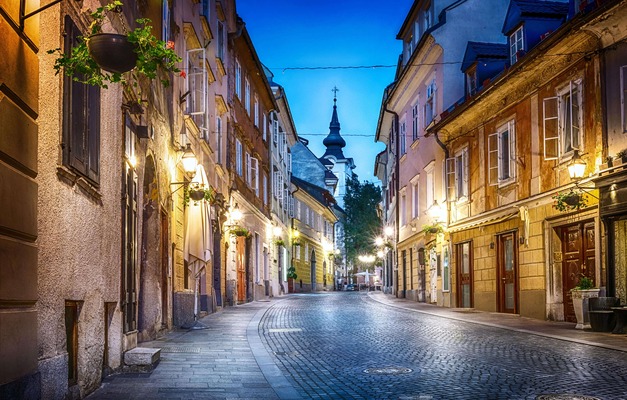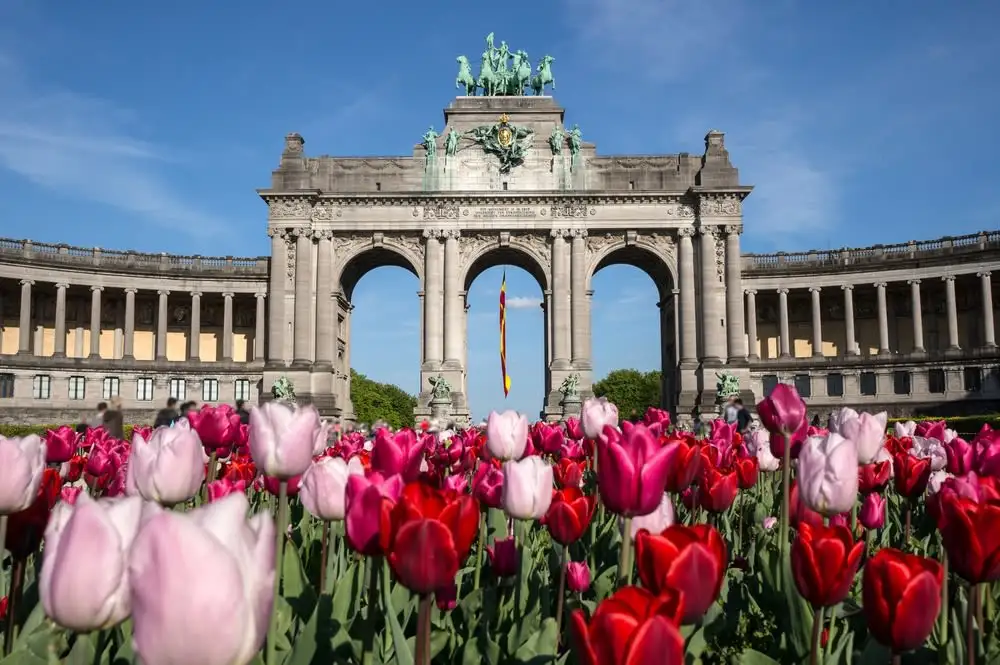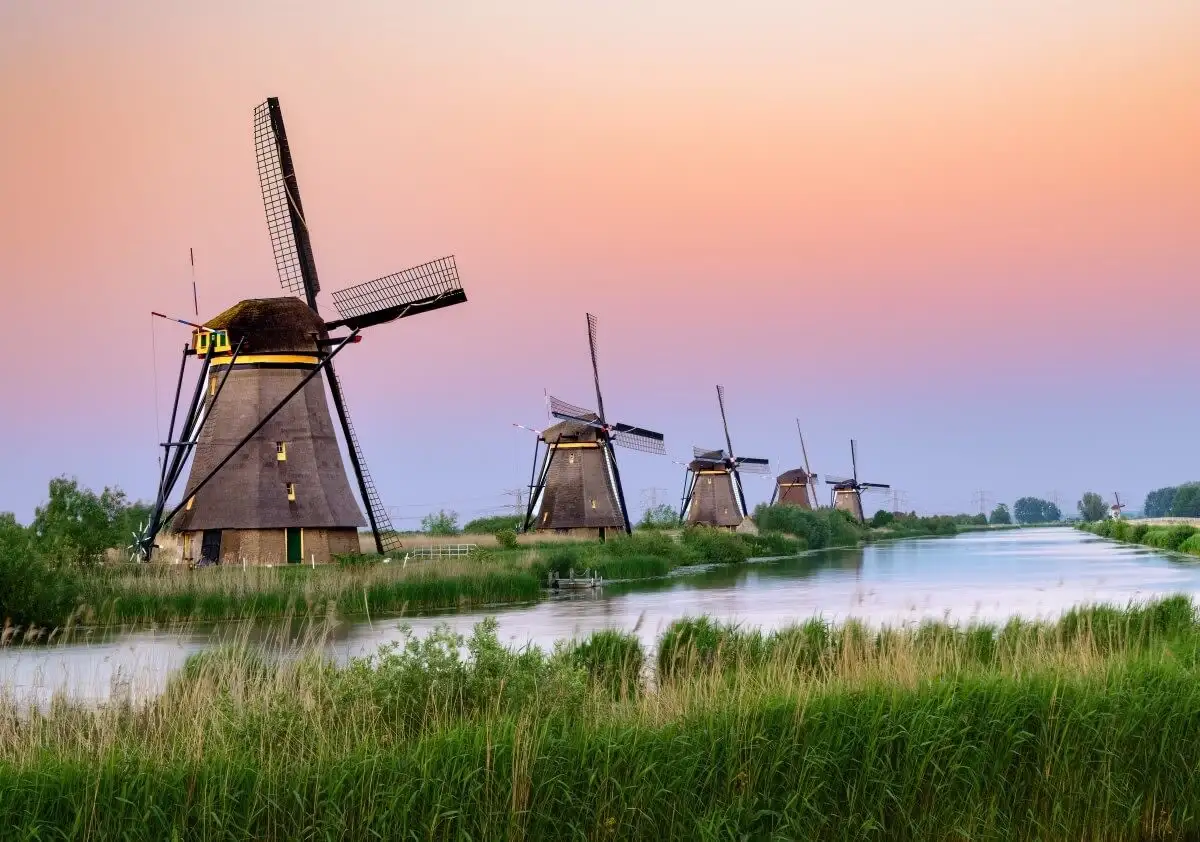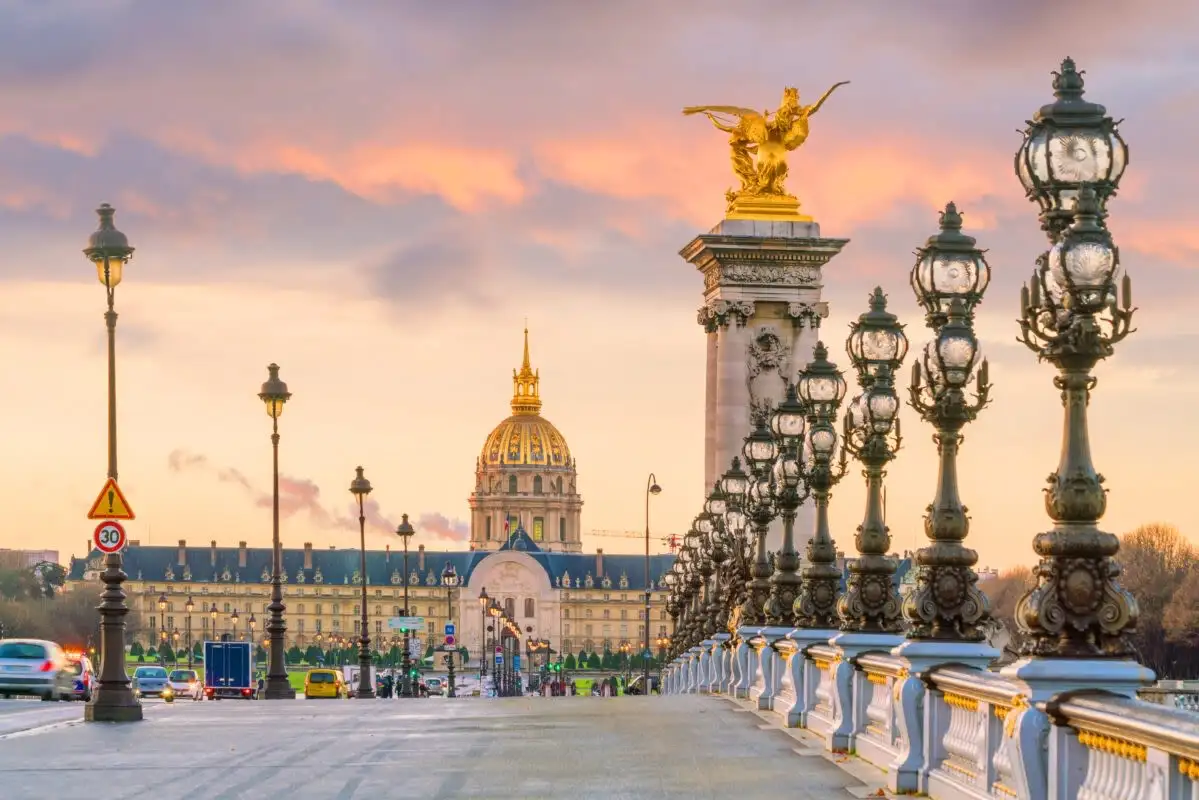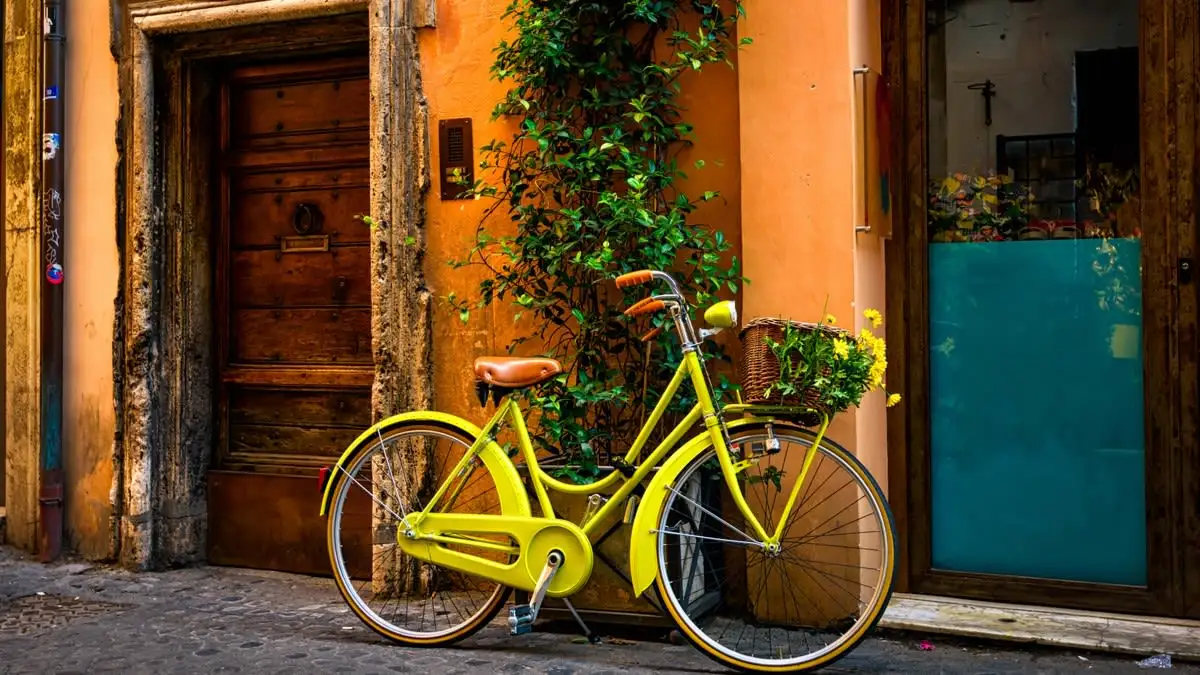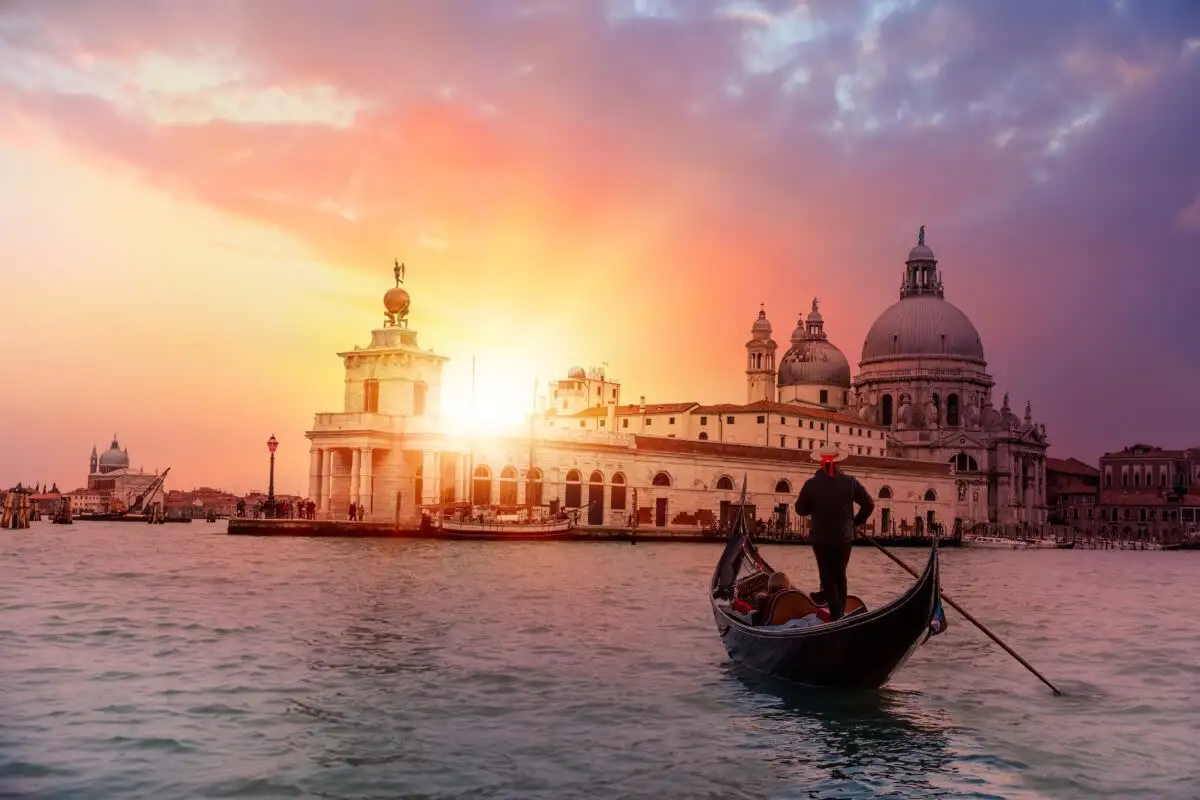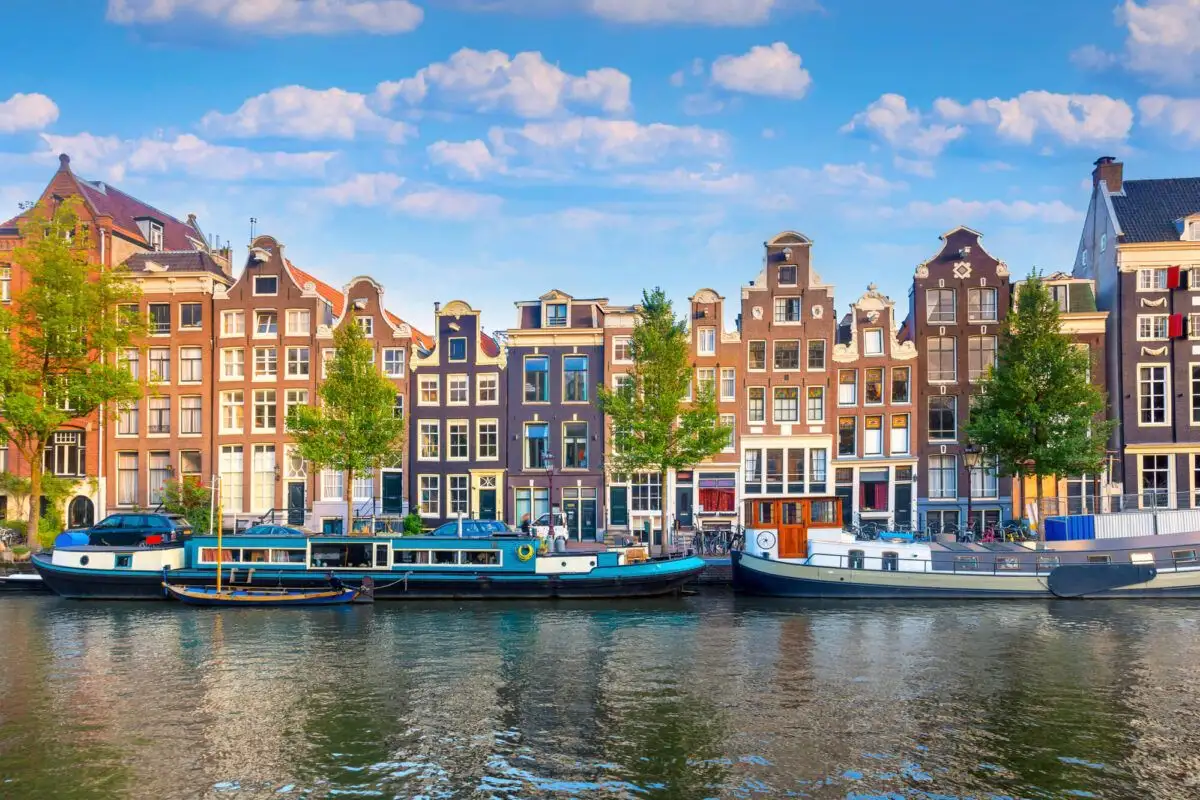
European Castles & Cultural Tapestry Tour
 17 Day Tour of Munich, Heidelberg, Paris, Brussels and Amsterdam
17 Day Tour of Munich, Heidelberg, Paris, Brussels and Amsterdam
Overview
Trip Map
Itinerary
Inclusions
Reviews







17 Days 16 Nights
Best Time: Jan-Dec
Castle & Palace Tours
Cultural Exploration
Journey to Europe's most spectacular castles and sumptuous palaces on this 17-day trip covering 4 countries, with overnights in 6 beautiful cities. Wander the romantic streets of Montmartre in Paris, be enchanted by Munich's fairy-tale Neuschwanstein Castle, and walk along the canals of Amsterdam beneath gabled houses. Discover Europe's cultural heartbeat in cosmopolitan Brussels and picturesque Heidelberg. With exclusive private tours included in each city, you'll experience gothic cathedrals, quaint old towns, and iconic landmarks like the Eiffel Tower & Versailles Palace, all made easy with a detailed itinerary provided in our mobile app.
- Take a day trip to Neuschwanstein Castle, a vision of royal dreams nestled in Bavarian mountains.
- Unravel Parisian history on a private guided walking tour on the Île de la Cité and Champs-Élysées.
- Uncover the often surprising sights of Brussels with visits to Grand Place and the surreal Atomium.
- Learn Ann Frank's tragic story on a private guided tour in Amsterdam and take a serene canal cruise.
- Discover two of Europe’s most captivating small cities: Bruges in Belgium and Heidelberg in Germany.
Journey to Europe's most spectacular castles and sumptuous palaces on this 17-day trip covering 4 countries, with overnights in 6 beautiful cities. Wander the romantic streets of Montmartre in Paris, be enchanted by Munich's fairy-tale Neuschwanstein Castle, and walk along the canals of Amsterdam beneath gabled houses. Discover Europe's cultural heartbeat in cosmopolitan Brussels and picturesque Heidelberg. With exclusive private tours included in each city, you'll experience gothic cathedrals, quaint old towns, and iconic landmarks like the Eiffel Tower & Versailles Palace, all made easy with a detailed itinerary provided in our mobile app.
- Take a day trip to Neuschwanstein Castle, a vision of royal dreams nestled in Bavarian mountains.
- Unravel Parisian history on a private guided walking tour on the Île de la Cité and Champs-Élysées.
- Uncover the often surprising sights of Brussels with visits to Grand Place and the surreal Atomium.
- Learn Ann Frank's tragic story on a private guided tour in Amsterdam and take a serene canal cruise.
- Discover two of Europe’s most captivating small cities: Bruges in Belgium and Heidelberg in Germany.

Old Town
Architecture

Residence Palace
Castles & Chateaux

Heidelberg Castle
Castles & Chateaux

Church of the Holy Spirit
Churches & Monasteries

Eiffel Tower
Historic Landmarks

Louvre Museum
Museums & Galleries

Grand Place
Historic Landmarks

Manneken Pis
Historic Landmarks

Old Town
Historic Landmarks
Must see sights

Old Town
Architecture

Residence Palace
Castles & Chateaux

Heidelberg Castle
Castles & Chateaux

Church of the Holy Spirit
Churches & Monasteries

Eiffel Tower
Historic Landmarks

Louvre Museum
Museums & Galleries

Grand Place
Historic Landmarks

Manneken Pis
Historic Landmarks

Old Town
Historic Landmarks
Starting from
$4530.9234235
per person
 Not included
Not included Secure Your Customizable Trip
Enter your details to embark on a journey that can be tailored just for you.
Start
Travelers
0 travelers
Add Room
Remove Room
Preferred Hotel Stars
Select Hotel Stars
Craft Your Own Itinerary
Select your interests and destinations for a trip plan inspired by you.
Grand Tour of Northern Europe Trip - Map & Itinerary
Enable/Disable Map Scrolling
Click To Make Map Interactive

Grand Tour of Northern Europe Trip Timeline
 Edit Details
Edit DetailsArrival
3 nights
Munich
Germany
Train: 4h
Train: 0.5h
2 nights
Heidelberg
Germany
Train: 1h
Train: 3h
4 nights
Paris
France
Train: 1.5h
4 nights
Brussels
Belgium
Train: 3h
3 nights
Amsterdam
Netherlands
Departure
Day-By-Day Itinerary of Grand Tour of Northern Europe Trip

Day 1
Arrive Munich
Day 1
Arrive Munich



To Be Determined
Transfer from Airport
Munich has one main airport, Munich International Airport, where almost all visitors arrive. Taxis are available directly at the terminal exit, or you can arrange a private transfer for added convenience. The cheapest and fastest way to reach central Munich from is by train. The regional "S-bahn" trains delivers you from the airport train station (just follow the signs) directly to Munich's main station (München hbf) in the center of the city, from where you can easily hail a taxi that will be much less expensive than from the airport.

Day 1
Arrive Munich


Day 1
Arrive Munich




To Be Determined:
Transfer from Airport
Mid-Day/Afternoon:
Deutsches Museum
Late Afternoon/Early Evening:
Residence Palace

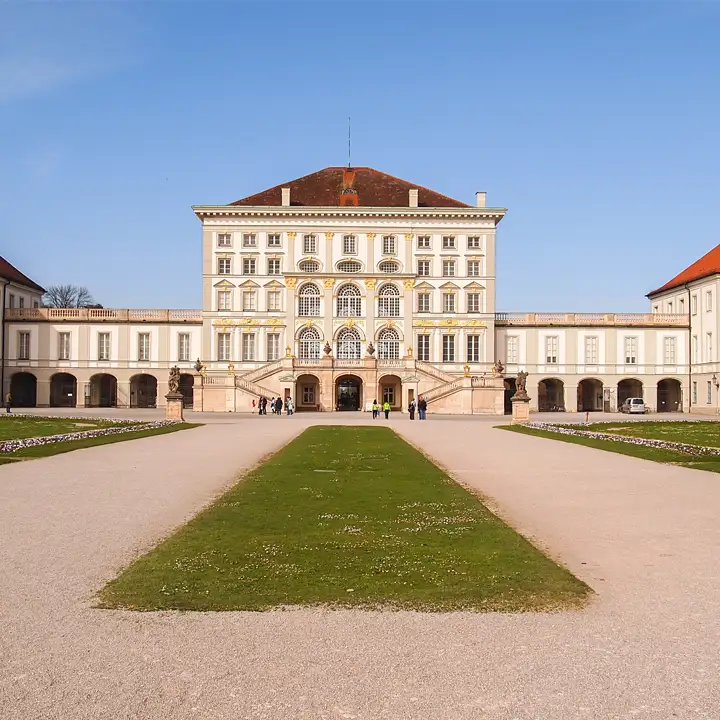
Day 2
Munich
Day 2
Munich



Morning to Afternoon
Nymphenburg Palace
Only a short tram ride from Munich's city center, you'll find a lovely palace scenically situated amidst a large park. Created as the summer residence of the Bavarian electors, the size, and dimension of the grounds, designed by a student of the Palace of Versailles' landscape designer, is astounding. The main palace building consists of a large villa and two wings of creaking parquet floors and sumptuous period rooms. The palace managed to survive the carpet bombing of the Second World War that destroyed around 80% of the inner city.

Gallery of Beauties
Stare into the eyes of King Ludwig I's mistresses.
Show More

Nymphenburg Garden
Escape to the favorite natural retreat of locals.
Show More

Marstallmuseum
Stare up close at the splendid and ostentatious carriages built for Bavaria's rulers.
Show More

Botanical Garden
Visit M unich's large Botanical Gardens just north of the Nymphenburg Palace.
Show More

Gallery of Beauties
Stare into the eyes of King Ludwig I's mistresses.
Show More

Nymphenburg Garden
Escape to the favorite natural retreat of locals.
Show More

Marstallmuseum
Stare up close at the splendid and ostentatious carriages built for Bavaria's rulers.
Show More

Botanical Garden
Visit M unich's large Botanical Gardens just north of the Nymphenburg Palace.
Show More
prev
next

Day 2
Munich

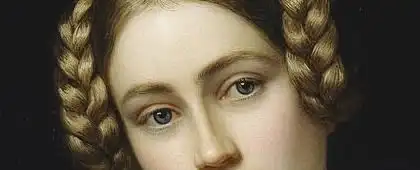
Gallery of Beauties
 Highlight of Nymphenburg Palace
Highlight of Nymphenburg PalaceStare into the eyes of King Ludwig I's mistresses.
One of the high points of the magnificent palace is the Schönheitengalerie, or the Gallery of Beauties, featuring 38 portraits of attractive females admired by King Ludwig I, including some of his mistresses, many with fascinating stories of their own related via the audio guide. Be sure to check out the story of Ludwig's longstanding infamous mistress, the Irish dancer Lola Montez, over whom Ludwig lost his crown.

Nymphenburg Garden
 Highlight of Nymphenburg Palace
Highlight of Nymphenburg PalaceEscape to the favorite natural retreat of locals.
The sprawling park behind Nymphenburg Palace is a favorite spot with Munich residents and visitors alike. It started out as an Italian garden and was later redesigned in the French style, but in the 19th century most of the park was transformed into the more natural English style. It is embellished with a number of water features, including a large lake, a cascade and a 1.5 mile-long canal - a great venue for ice skating and ice curling when it freezes over in winter.
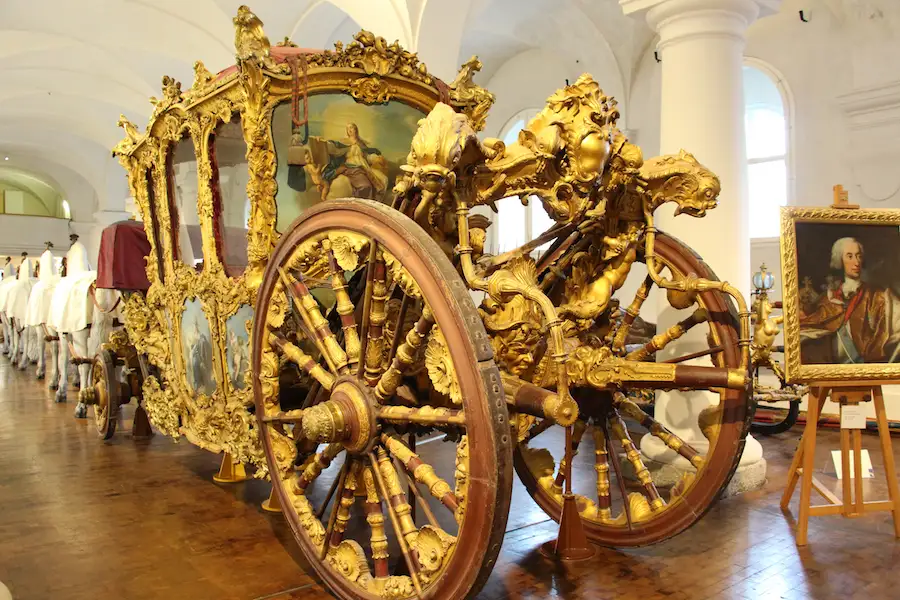
Marstallmuseum
 Highlight of Nymphenburg Palace
Highlight of Nymphenburg PalaceStare up close at the splendid and ostentatious carriages built for Bavaria's rulers.
Also housed in the main building is the Marstallmuseum, displaying royal coaches and riding gear dripping with gild and golden ornamentation, including King Ludwig II's outrageously fairy tale–like rococo sleigh, ingeniously fitted with oil lamps for his impromptu nocturnal outings. Upstairs is the world's largest collection of porcelain made by the famous Nymphenburger Manufaktur. Also known as the Sammlung Bäuml, it presents the entire product palette from the company's founding in 1747 until 1930.

Botanical Garden
 Highlight of Nymphenburg Palace
Highlight of Nymphenburg PalaceVisit M unich's large Botanical Gardens just north of the Nymphenburg Palace.
There are over 52 acres in the gardens, included greenhouses, a lake, a fountain, and houses dedicated to Africa and Madagascar, Mexico, palms and cactuses, and other themes.

Gallery of Beauties
 Highlight of Nymphenburg Palace
Highlight of Nymphenburg PalaceStare into the eyes of King Ludwig I's mistresses.
One of the high points of the magnificent palace is the Schönheitengalerie, or the Gallery of Beauties, featuring 38 portraits of attractive females admired by King Ludwig I, including some of his mistresses, many with fascinating stories of their own related via the audio guide. Be sure to check out the story of Ludwig's longstanding infamous mistress, the Irish dancer Lola Montez, over whom Ludwig lost his crown.

Nymphenburg Garden
 Highlight of Nymphenburg Palace
Highlight of Nymphenburg PalaceEscape to the favorite natural retreat of locals.
The sprawling park behind Nymphenburg Palace is a favorite spot with Munich residents and visitors alike. It started out as an Italian garden and was later redesigned in the French style, but in the 19th century most of the park was transformed into the more natural English style. It is embellished with a number of water features, including a large lake, a cascade and a 1.5 mile-long canal - a great venue for ice skating and ice curling when it freezes over in winter.

Marstallmuseum
 Highlight of Nymphenburg Palace
Highlight of Nymphenburg PalaceStare up close at the splendid and ostentatious carriages built for Bavaria's rulers.
Also housed in the main building is the Marstallmuseum, displaying royal coaches and riding gear dripping with gild and golden ornamentation, including King Ludwig II's outrageously fairy tale–like rococo sleigh, ingeniously fitted with oil lamps for his impromptu nocturnal outings. Upstairs is the world's largest collection of porcelain made by the famous Nymphenburger Manufaktur. Also known as the Sammlung Bäuml, it presents the entire product palette from the company's founding in 1747 until 1930.

Botanical Garden
 Highlight of Nymphenburg Palace
Highlight of Nymphenburg PalaceVisit M unich's large Botanical Gardens just north of the Nymphenburg Palace.
There are over 52 acres in the gardens, included greenhouses, a lake, a fountain, and houses dedicated to Africa and Madagascar, Mexico, palms and cactuses, and other themes.
prev
next


Day 3
Munich
Day 3
Munich


Early Morning to Early Evening
Excursion to Neuschwanstein Castle
An inspiration for the Disney Castles, numerous fairy tales, and countless dreamers, the Castle of Neuschwanstein is perhaps the most famous castle in the world. The eccentric Bavarian King Ludwig II created this amazing palace in the 19th century as an idyllic version of a medieval castle. You can visit by taking a guided tour from Munich or traveling independently by train and bus. In addition to enjoying spectacular views you can take a guided tour of the castle interior which is well worth the experience (but keep in mind that there a lots of steps to negotiate). If traveling independentally, be sure to book your interior tour reservations at least two days in advance.

Linderhof Palace
Stop by King Ludwig II's smallest palace on your way to Neuschwanstein and explore its delightful gardens.
Show More

Mary's Bridge
Enjoy a stunning view of the castle while suspended over a mountainous gorge.
Show More

Linderhof Palace
Stop by King Ludwig II's smallest palace on your way to Neuschwanstein and explore its delightful gardens.
Show More

Mary's Bridge
Enjoy a stunning view of the castle while suspended over a mountainous gorge.
Show More

Linderhof Palace
Stop by King Ludwig II's smallest palace on your way to Neuschwanstein and explore its delightful gardens.
Show More

Mary's Bridge
Enjoy a stunning view of the castle while suspended over a mountainous gorge.
Show More
prev
next

Day 3
Munich

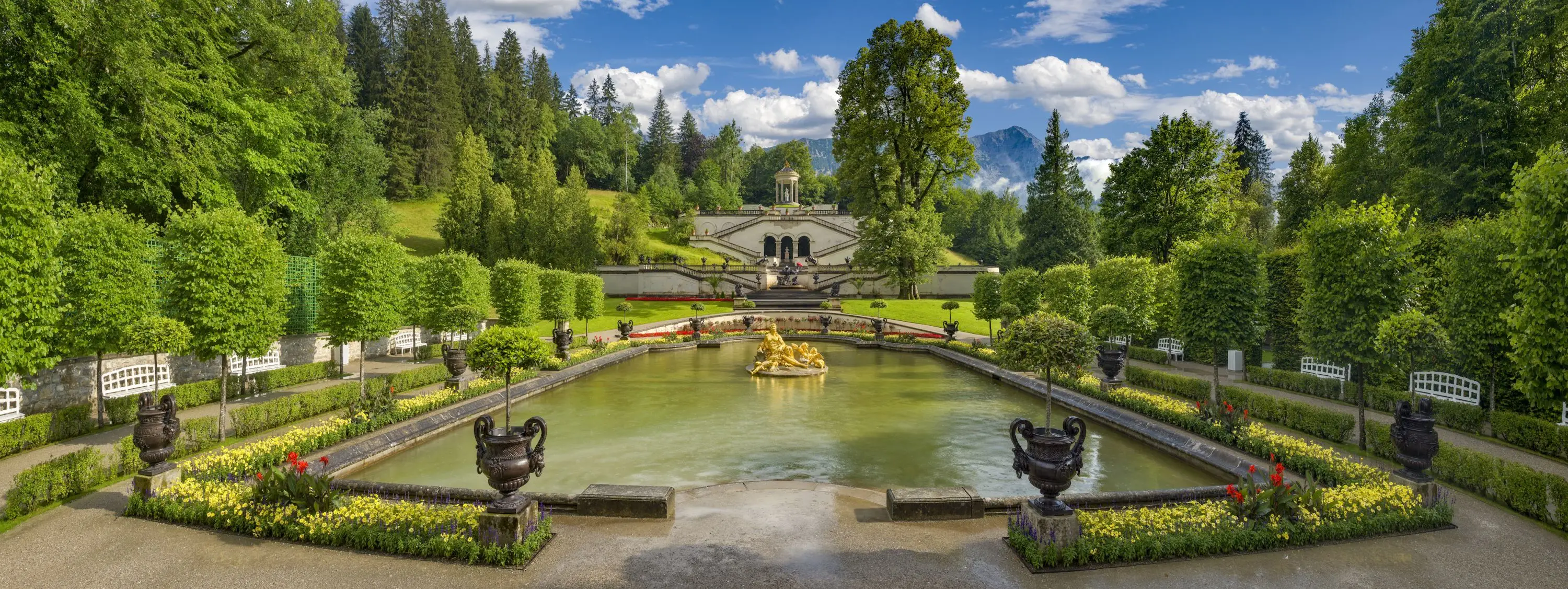
Linderhof Palace
 Highlight of Excursion to Neuschwanstein Castle
Highlight of Excursion to Neuschwanstein CastleStop by King Ludwig II's smallest palace on your way to Neuschwanstein and explore its delightful gardens.
Another of the eccentric (some say mad) King Ludwig II's creations is Linderhof Palace, which with its fantastic grotto and Moorish pavilion testifies to the king's vision. The smallest of his three palaces that he built, it is the only one that he lived to see completed. The palace is in between Munich and Neuschwanstein, meaning many tours stop there along the way.
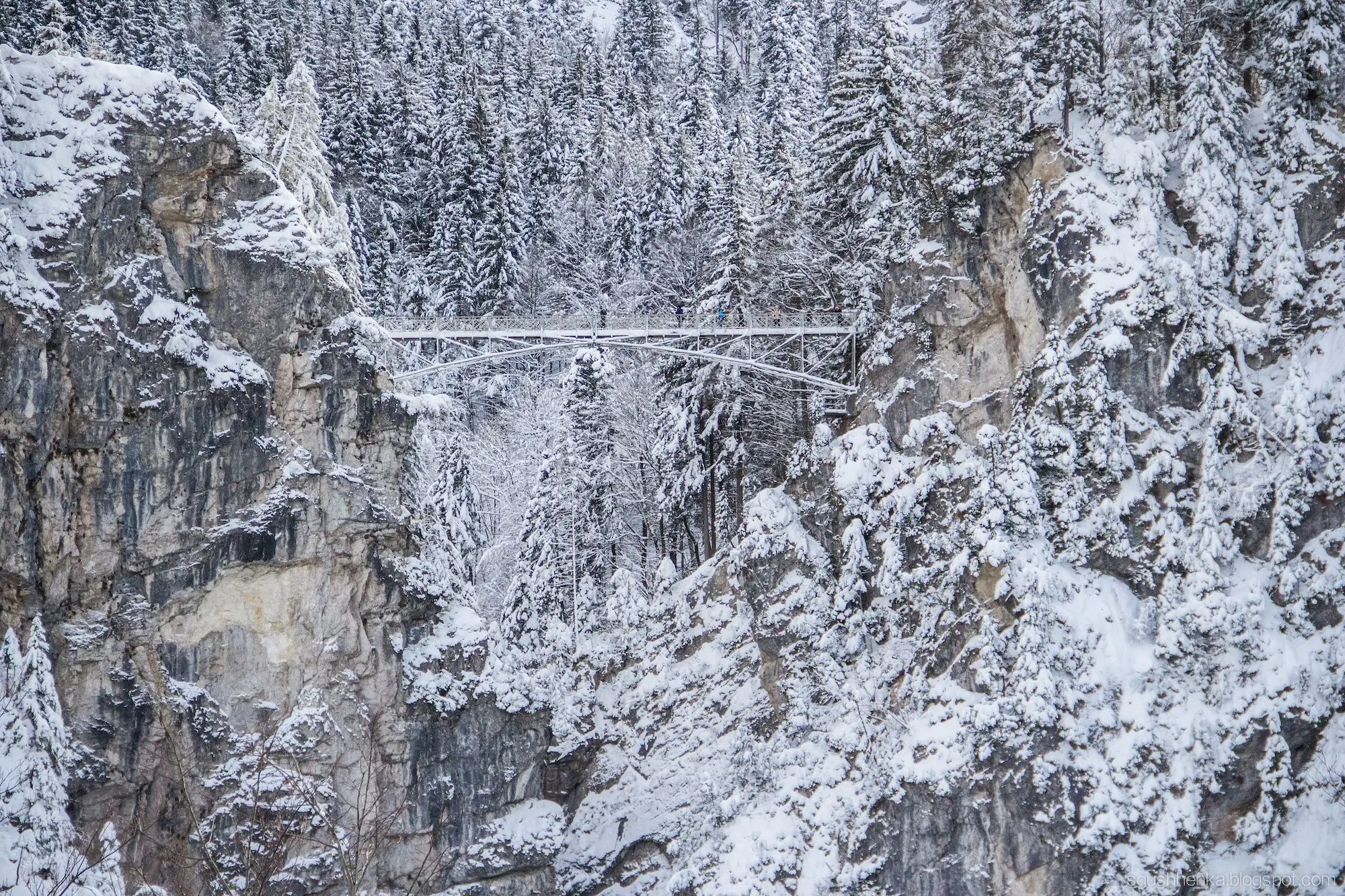
Mary's Bridge
 Highlight of Excursion to Neuschwanstein Castle
Highlight of Excursion to Neuschwanstein CastleEnjoy a stunning view of the castle while suspended over a mountainous gorge.
You definitely won't want to miss taking in the best views and photographs of Neuschwanstein from Marienbrücke (Mary's Bridge) over the dramatic Pöllat Gorge. The minibus terminal is very close at just 5 min walk away, while it's a steepish 10-15min climb on a wide and well-groomed path to get there from behind the castle. As noted above, Mary's Bridge can get a little crowded, so you might have to wait for a gap before you can fit on.

Linderhof Palace
 Highlight of Excursion to Neuschwanstein Castle
Highlight of Excursion to Neuschwanstein CastleStop by King Ludwig II's smallest palace on your way to Neuschwanstein and explore its delightful gardens.
Another of the eccentric (some say mad) King Ludwig II's creations is Linderhof Palace, which with its fantastic grotto and Moorish pavilion testifies to the king's vision. The smallest of his three palaces that he built, it is the only one that he lived to see completed. The palace is in between Munich and Neuschwanstein, meaning many tours stop there along the way.

Mary's Bridge
 Highlight of Excursion to Neuschwanstein Castle
Highlight of Excursion to Neuschwanstein CastleEnjoy a stunning view of the castle while suspended over a mountainous gorge.
You definitely won't want to miss taking in the best views and photographs of Neuschwanstein from Marienbrücke (Mary's Bridge) over the dramatic Pöllat Gorge. The minibus terminal is very close at just 5 min walk away, while it's a steepish 10-15min climb on a wide and well-groomed path to get there from behind the castle. As noted above, Mary's Bridge can get a little crowded, so you might have to wait for a gap before you can fit on.

Linderhof Palace
 Highlight of Excursion to Neuschwanstein Castle
Highlight of Excursion to Neuschwanstein CastleStop by King Ludwig II's smallest palace on your way to Neuschwanstein and explore its delightful gardens.
Another of the eccentric (some say mad) King Ludwig II's creations is Linderhof Palace, which with its fantastic grotto and Moorish pavilion testifies to the king's vision. The smallest of his three palaces that he built, it is the only one that he lived to see completed. The palace is in between Munich and Neuschwanstein, meaning many tours stop there along the way.

Mary's Bridge
 Highlight of Excursion to Neuschwanstein Castle
Highlight of Excursion to Neuschwanstein CastleEnjoy a stunning view of the castle while suspended over a mountainous gorge.
You definitely won't want to miss taking in the best views and photographs of Neuschwanstein from Marienbrücke (Mary's Bridge) over the dramatic Pöllat Gorge. The minibus terminal is very close at just 5 min walk away, while it's a steepish 10-15min climb on a wide and well-groomed path to get there from behind the castle. As noted above, Mary's Bridge can get a little crowded, so you might have to wait for a gap before you can fit on.
prev
next

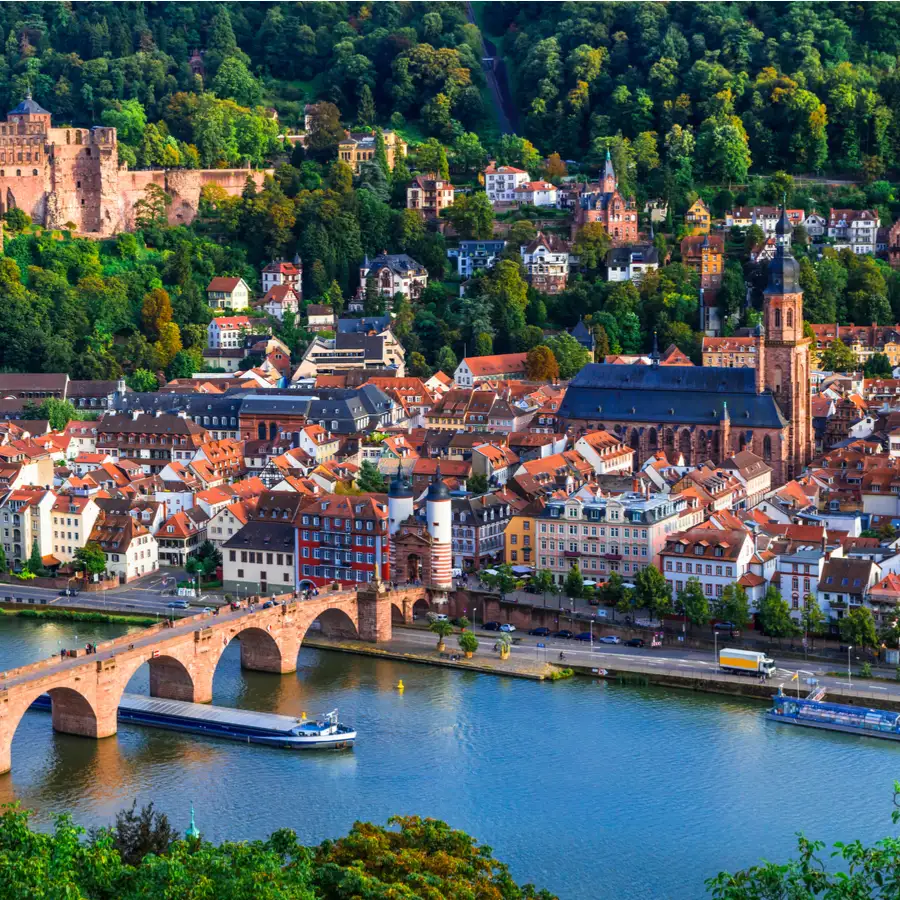
Day 4
Munich to Heidelberg
Day 4
Munich to Heidelberg





8:45 AM
Transfer to Rail Station
Most trains depart from Müchen Hbf station, the largest station in the city. Before spending money on a transfer, be sure to check whether your hotel is within easy walking distance. Also consider that public transport is the cheapest and sometimes fastest option. If staying at a hotel, they can order a reliable taxi. Some private transfers will even help with your bags. Uber is also available for those with the app.

Day 4
Munich to Heidelberg


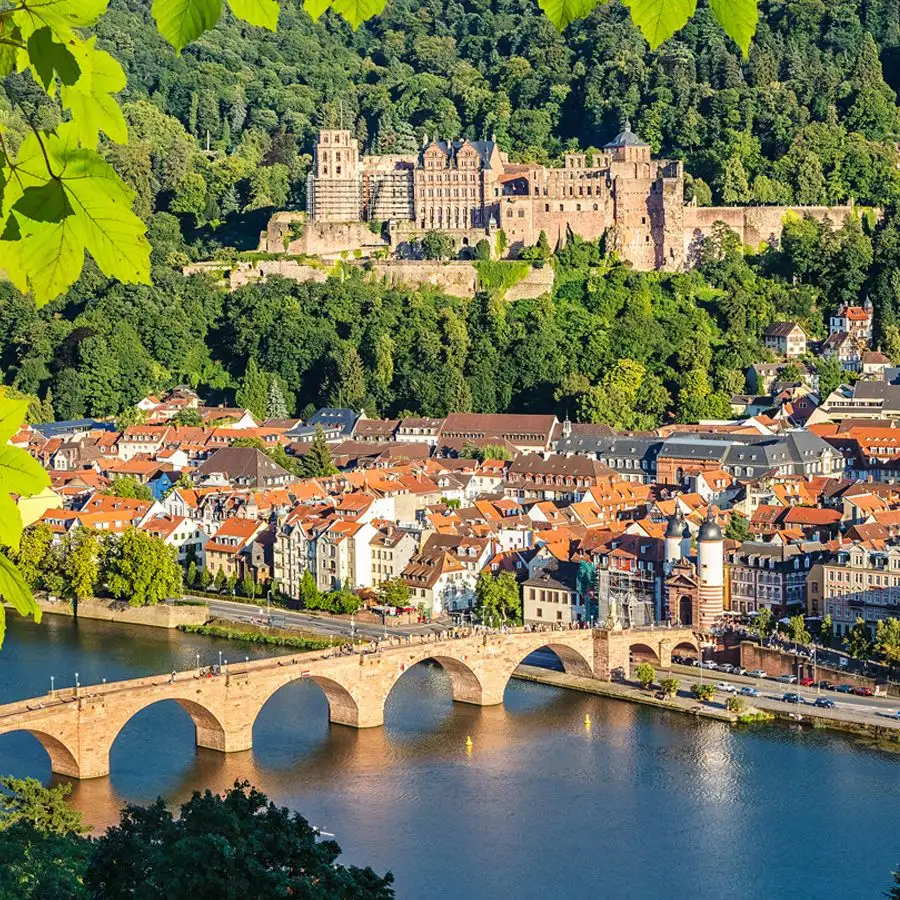
Day 5
Heidelberg
Day 5
Heidelberg


9:00 AM - 1:00 PM
Guided Walking Tour of Heidelberg
On this 4 hour tour, your guide will show you the highlights of Heidelberg and help you understand what makes this city so unique. Sites visited will include the Heidelberg University, the Old Bridge, Altstadt, Town Hall and Heidelberg Castle.
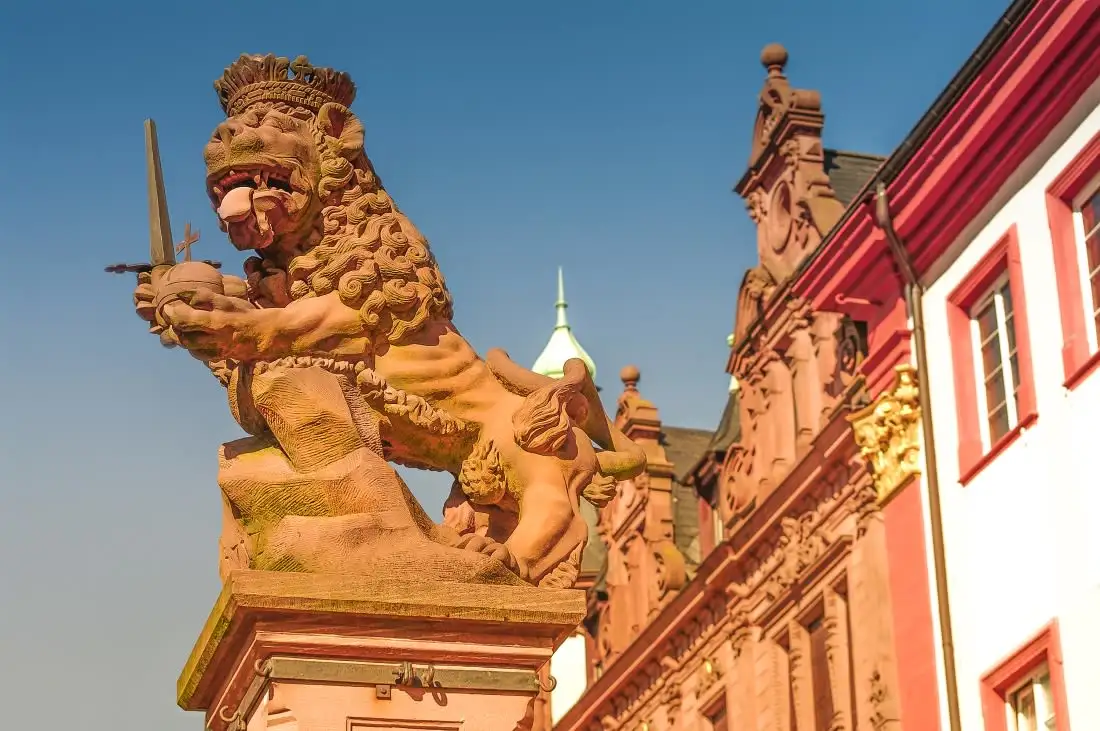
Altstadt
The light and colors of this historic city are a happy sight to behold.
Show More

Heidelberg University
Founded in 1386, this is Germany’s oldest and one of its most prestigious universities.
Show More

Altstadt
The light and colors of this historic city are a happy sight to behold.
Show More

Heidelberg University
Founded in 1386, this is Germany’s oldest and one of its most prestigious universities.
Show More

Altstadt
The light and colors of this historic city are a happy sight to behold.
Show More

Heidelberg University
Founded in 1386, this is Germany’s oldest and one of its most prestigious universities.
Show More
prev
next

Day 5
Heidelberg


Altstadt
 Highlight of Guided Walking Tour of Heidelberg
Highlight of Guided Walking Tour of HeidelbergThe light and colors of this historic city are a happy sight to behold.
The Old Town of Heidelberg, Germany, seduces with its views. Framed by the Neckar River and overlooked by the majestic Heidelberg Castle, its cobblestone streets, baroque architecture, and the oldest university in Germany beckon visitors. Highlights include the Hauptstrasse, a bustling pedestrian shopping street, and the historic Holy Spirit Church. Heidelberg's Old Town embodies the romantic spirit of Germany.
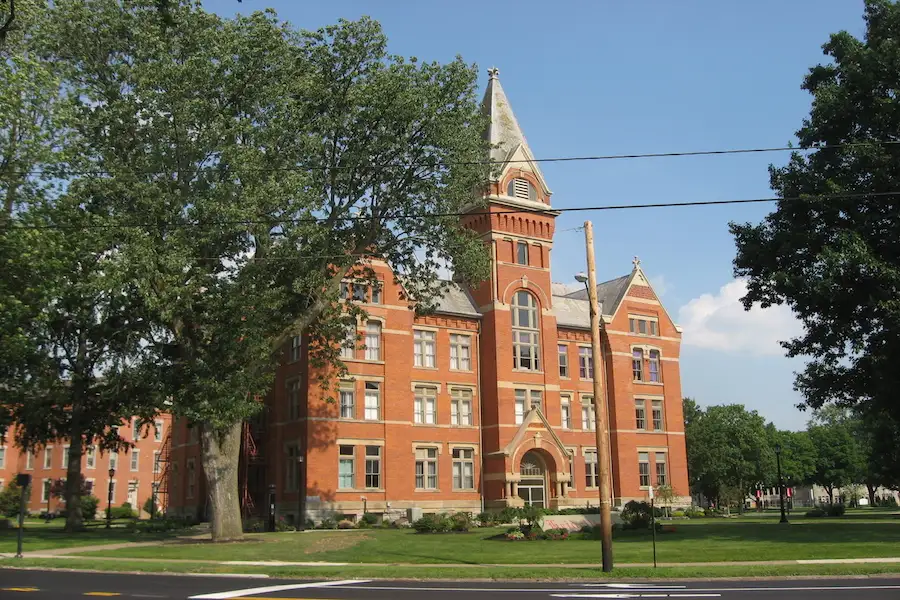
Heidelberg University
 Highlight of Guided Walking Tour of Heidelberg
Highlight of Guided Walking Tour of HeidelbergFounded in 1386, this is Germany’s oldest and one of its most prestigious universities.
The university is currently comprised of 12 faculties with over 30,000 German and international students enrolled. The college is known for its reputable science, art, law, and medical programs. The most historic facilities are located around the Universitätsplatz and dominated by the Alte Universität (Old University, 1712–28; on the south side) and the Neue Universität (New University, 1931; on the north side).

Altstadt
 Highlight of Guided Walking Tour of Heidelberg
Highlight of Guided Walking Tour of HeidelbergThe light and colors of this historic city are a happy sight to behold.
The Old Town of Heidelberg, Germany, seduces with its views. Framed by the Neckar River and overlooked by the majestic Heidelberg Castle, its cobblestone streets, baroque architecture, and the oldest university in Germany beckon visitors. Highlights include the Hauptstrasse, a bustling pedestrian shopping street, and the historic Holy Spirit Church. Heidelberg's Old Town embodies the romantic spirit of Germany.

Heidelberg University
 Highlight of Guided Walking Tour of Heidelberg
Highlight of Guided Walking Tour of HeidelbergFounded in 1386, this is Germany’s oldest and one of its most prestigious universities.
The university is currently comprised of 12 faculties with over 30,000 German and international students enrolled. The college is known for its reputable science, art, law, and medical programs. The most historic facilities are located around the Universitätsplatz and dominated by the Alte Universität (Old University, 1712–28; on the south side) and the Neue Universität (New University, 1931; on the north side).

Altstadt
 Highlight of Guided Walking Tour of Heidelberg
Highlight of Guided Walking Tour of HeidelbergThe light and colors of this historic city are a happy sight to behold.
The Old Town of Heidelberg, Germany, seduces with its views. Framed by the Neckar River and overlooked by the majestic Heidelberg Castle, its cobblestone streets, baroque architecture, and the oldest university in Germany beckon visitors. Highlights include the Hauptstrasse, a bustling pedestrian shopping street, and the historic Holy Spirit Church. Heidelberg's Old Town embodies the romantic spirit of Germany.

Heidelberg University
 Highlight of Guided Walking Tour of Heidelberg
Highlight of Guided Walking Tour of HeidelbergFounded in 1386, this is Germany’s oldest and one of its most prestigious universities.
The university is currently comprised of 12 faculties with over 30,000 German and international students enrolled. The college is known for its reputable science, art, law, and medical programs. The most historic facilities are located around the Universitätsplatz and dominated by the Alte Universität (Old University, 1712–28; on the south side) and the Neue Universität (New University, 1931; on the north side).
prev
next

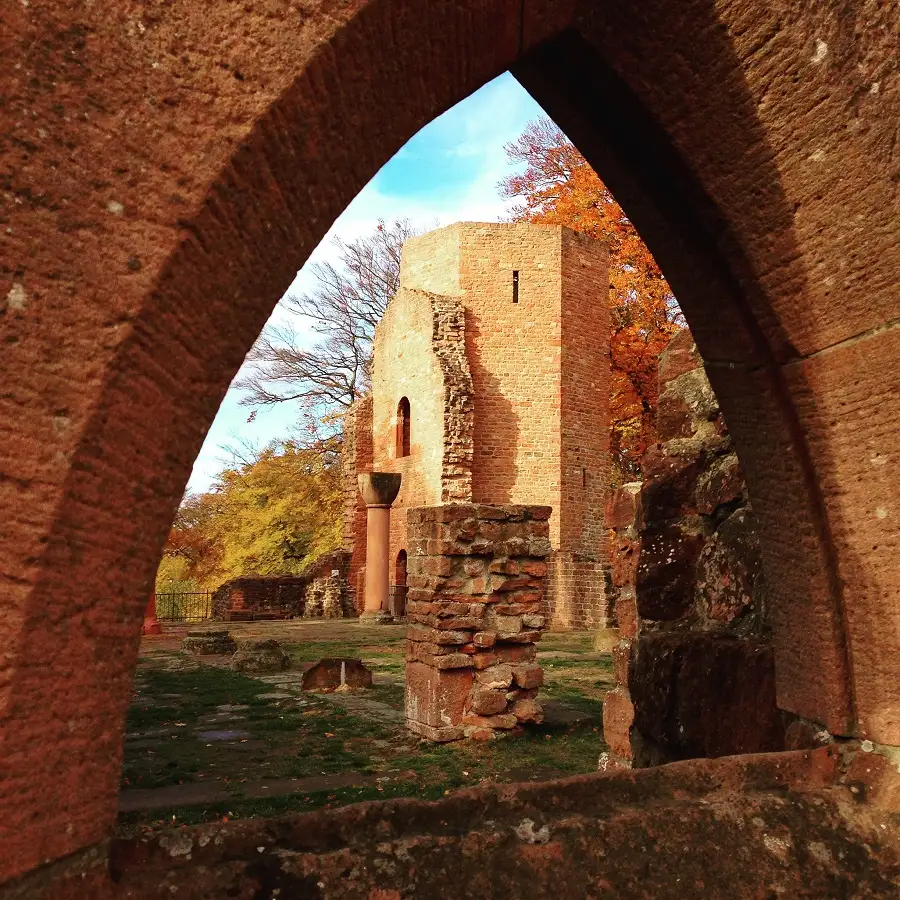
Day 6
Heidelberg to Paris
Day 6
Heidelberg to Paris





Morning/Mid-Day
Philospher's Way Hike
Enjoy a gentle hike up into the hills above Heidelberg from the Old Bridge to get magnificent views of the castle on the other side, then trek up further to visit the wonderfully atmospheric ruins of St. Michael's ruins and Thingstätte, the pseudo-Grecian amphitheater built by the Nazis in the mid-1930s to stage opera and theater plays extolling the virtues of the Aryan race.

Thingstätte
Find the open-air amphiteater built by the Nazis as a site for their rallies.
Show More

Monastary Ruins
Discover the isolated ruins at the top of the hill overlooking Heidelberg.
Show More

Thingstätte
Find the open-air amphiteater built by the Nazis as a site for their rallies.
Show More

Monastary Ruins
Discover the isolated ruins at the top of the hill overlooking Heidelberg.
Show More

Thingstätte
Find the open-air amphiteater built by the Nazis as a site for their rallies.
Show More

Monastary Ruins
Discover the isolated ruins at the top of the hill overlooking Heidelberg.
Show More
prev
next

Day 6
Heidelberg to Paris

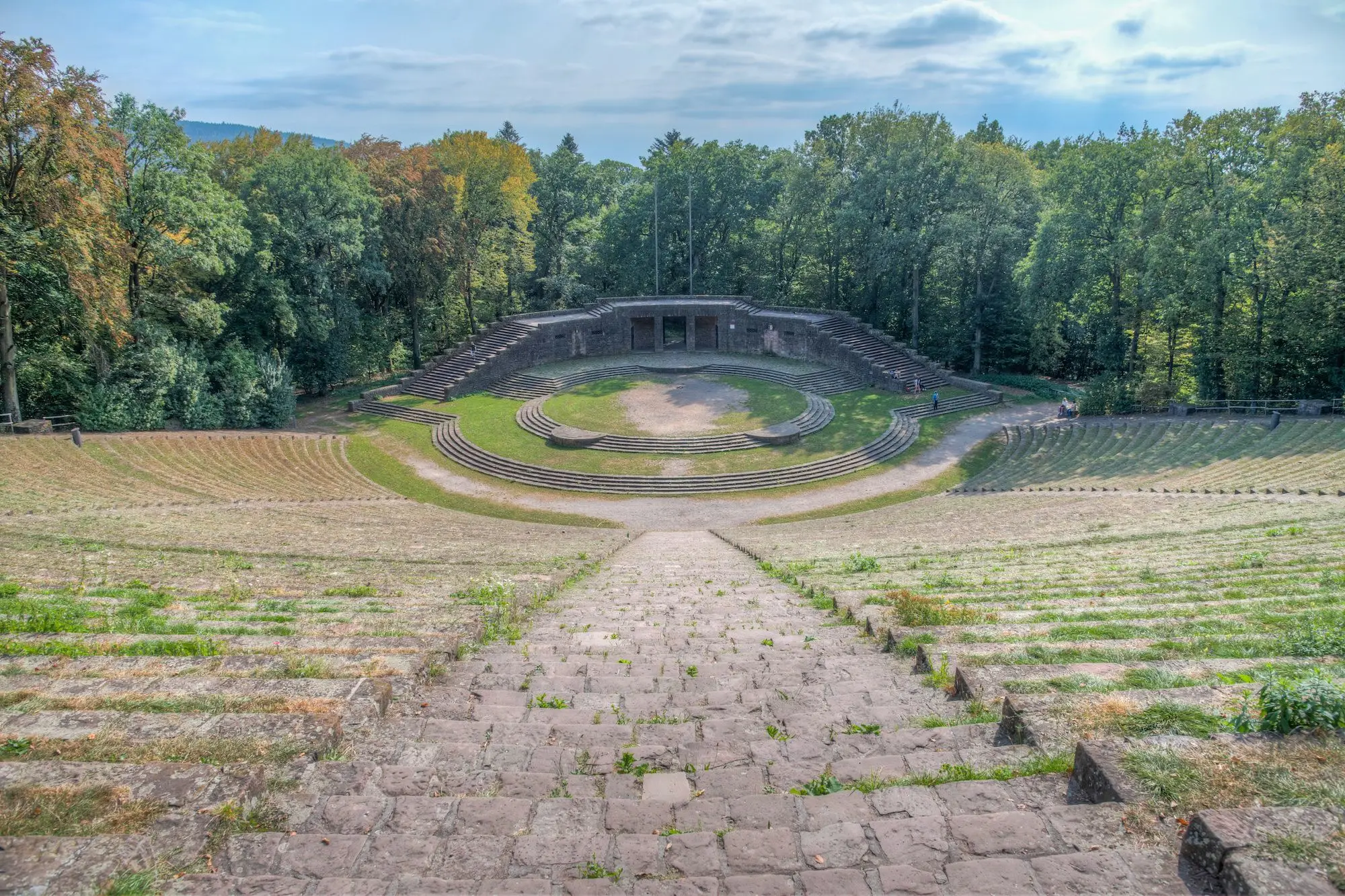
Thingstätte
 Highlight of Philospher's Way Hike
Highlight of Philospher's Way HikeFind the open-air amphiteater built by the Nazis as a site for their rallies.
This open-air amphitheater was built in 1935 by the Nazi party and was designed by Heidelberg native Albert Speer.It was used by the Nazi party during WWII for rallies and solstice festivals. It is now preserved as a monument, but it is still used for many festivals and cultural events throughout the year.
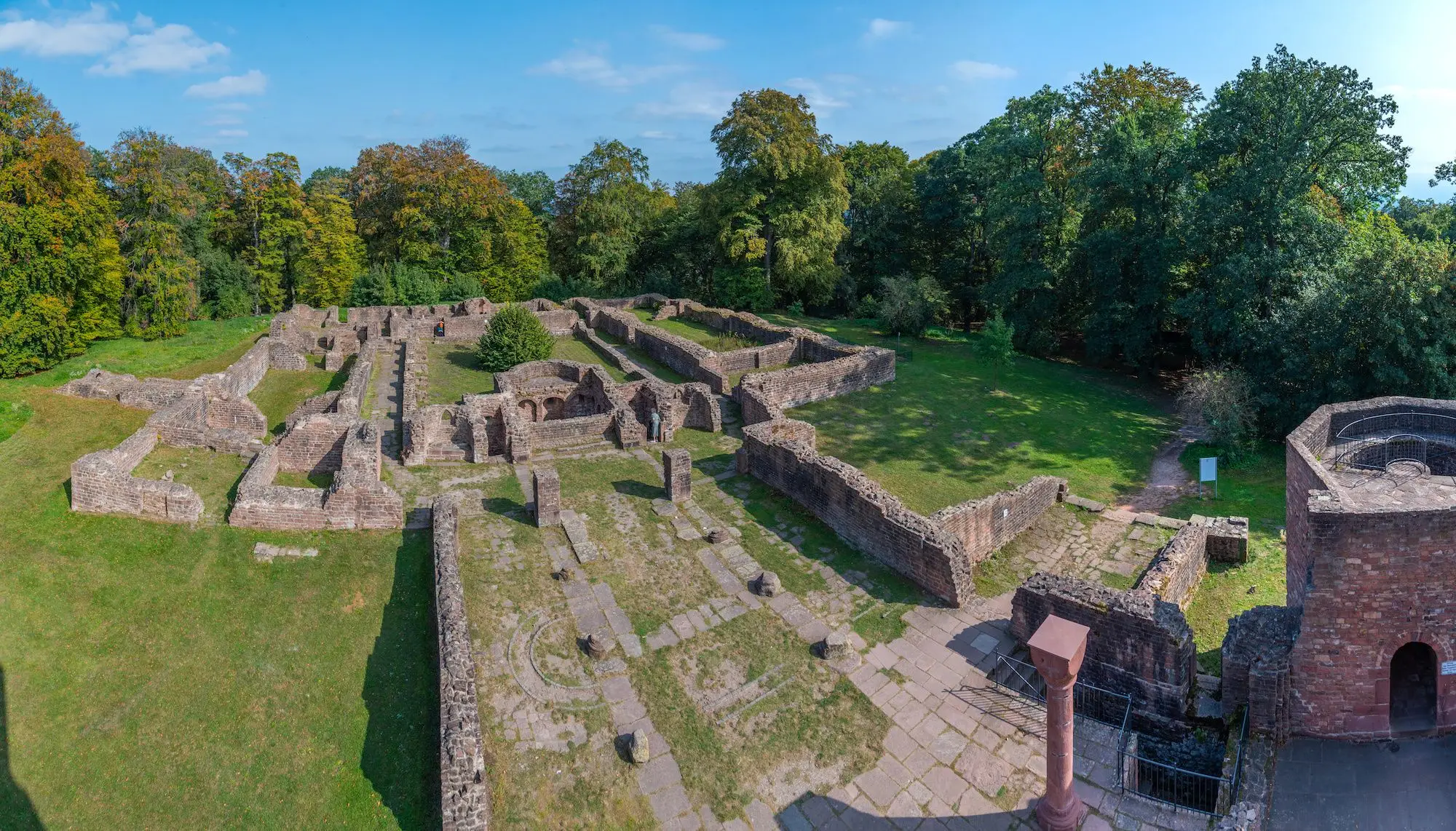
Monastary Ruins
 Highlight of Philospher's Way Hike
Highlight of Philospher's Way HikeDiscover the isolated ruins at the top of the hill overlooking Heidelberg.
In 1023, Abbot Reginbald, who later became Bishop of Speyer, built St. Michael’s Monastery, and it is these remains which are still visible today. After the death of Abbott Friedrich in 1070, the monastery became a place of pilgrimage. In 1503, the last three monks living in the monastery were killed in their beds when part of the steeple collapsed. After that, the monastery became abandoned and was forgotten.

Thingstätte
 Highlight of Philospher's Way Hike
Highlight of Philospher's Way HikeFind the open-air amphiteater built by the Nazis as a site for their rallies.
This open-air amphitheater was built in 1935 by the Nazi party and was designed by Heidelberg native Albert Speer.It was used by the Nazi party during WWII for rallies and solstice festivals. It is now preserved as a monument, but it is still used for many festivals and cultural events throughout the year.

Monastary Ruins
 Highlight of Philospher's Way Hike
Highlight of Philospher's Way HikeDiscover the isolated ruins at the top of the hill overlooking Heidelberg.
In 1023, Abbot Reginbald, who later became Bishop of Speyer, built St. Michael’s Monastery, and it is these remains which are still visible today. After the death of Abbott Friedrich in 1070, the monastery became a place of pilgrimage. In 1503, the last three monks living in the monastery were killed in their beds when part of the steeple collapsed. After that, the monastery became abandoned and was forgotten.

Thingstätte
 Highlight of Philospher's Way Hike
Highlight of Philospher's Way HikeFind the open-air amphiteater built by the Nazis as a site for their rallies.
This open-air amphitheater was built in 1935 by the Nazi party and was designed by Heidelberg native Albert Speer.It was used by the Nazi party during WWII for rallies and solstice festivals. It is now preserved as a monument, but it is still used for many festivals and cultural events throughout the year.

Monastary Ruins
 Highlight of Philospher's Way Hike
Highlight of Philospher's Way HikeDiscover the isolated ruins at the top of the hill overlooking Heidelberg.
In 1023, Abbot Reginbald, who later became Bishop of Speyer, built St. Michael’s Monastery, and it is these remains which are still visible today. After the death of Abbott Friedrich in 1070, the monastery became a place of pilgrimage. In 1503, the last three monks living in the monastery were killed in their beds when part of the steeple collapsed. After that, the monastery became abandoned and was forgotten.
prev
next


Day 7
Paris
Day 7
Paris



9:00 AM - 1:00 PM
Paris Highlights Walking Tour
Embark on a captivating 4-hour walking tour of the center of Paris, the City of Lights, where history and modernity blend seamlessly along its enchanting streets. Starting from your accommodation, you will explore the heart of this dynamic city and learn how to navigate Paris as a local.

Day 7
Paris


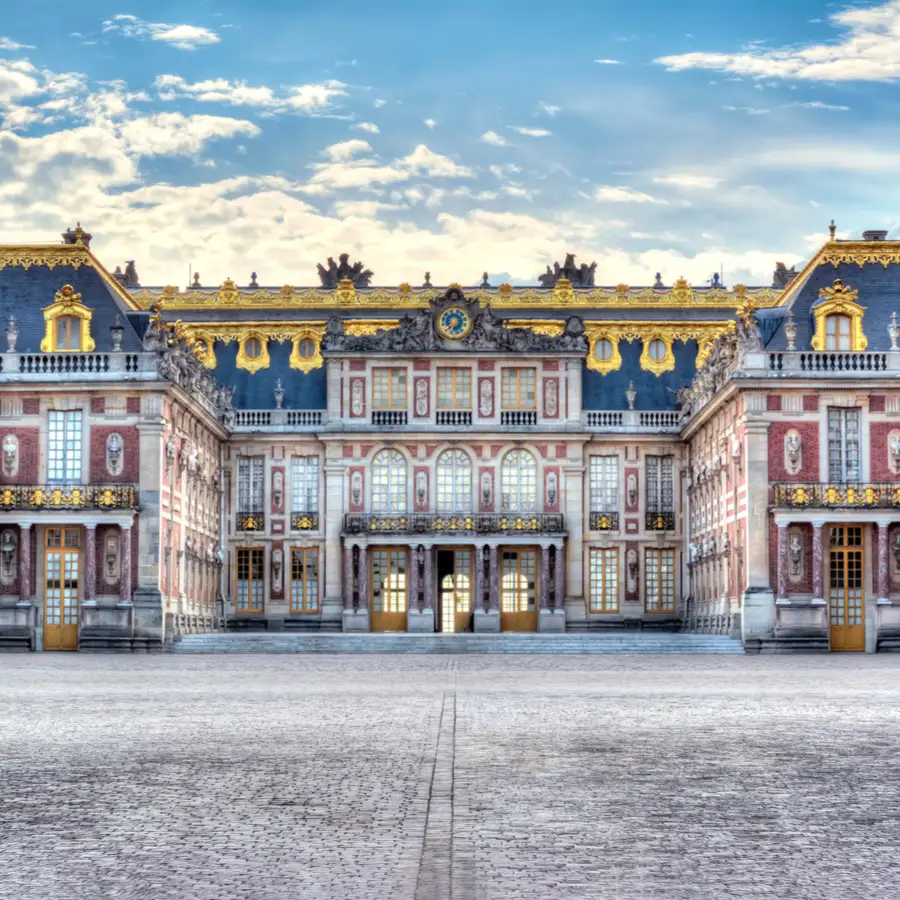
Day 8
Paris
Day 8
Paris


Early Morning to Afternoon
Palace of Versailles
The Château of Versailles, a symbol of the grandeur of French monarchy, invites visitors to explore its lavish history and architectural majesty. From the spellbinding elegance of the Hall of Mirrors, where the Treaty of Versailles was signed, to the vast, meticulously manicured Gardens the pinnacle of French garden design, every corner tells a story of opulence and power. Discover the intimate escapes of royalty at the Grand and Petit Trianon, and marvel at the divine beauty of the Royal Chapel, a masterpiece of Baroque architecture.

The Queen's Hamlet
Imagine living like the "peasants" here?
Show More

Parc de Versailles
Feel like a king, feel like a queen, hopefully you'll feel good looking out across the park
Show More

Main Palace of Versailles
There are palaces, and then there is Versailles...
Show More

The Queen's Hamlet
Imagine living like the "peasants" here?
Show More

Parc de Versailles
Feel like a king, feel like a queen, hopefully you'll feel good looking out across the park
Show More

Main Palace of Versailles
There are palaces, and then there is Versailles...
Show More

The Queen's Hamlet
Imagine living like the "peasants" here?
Show More
prev
next

Day 8
Paris

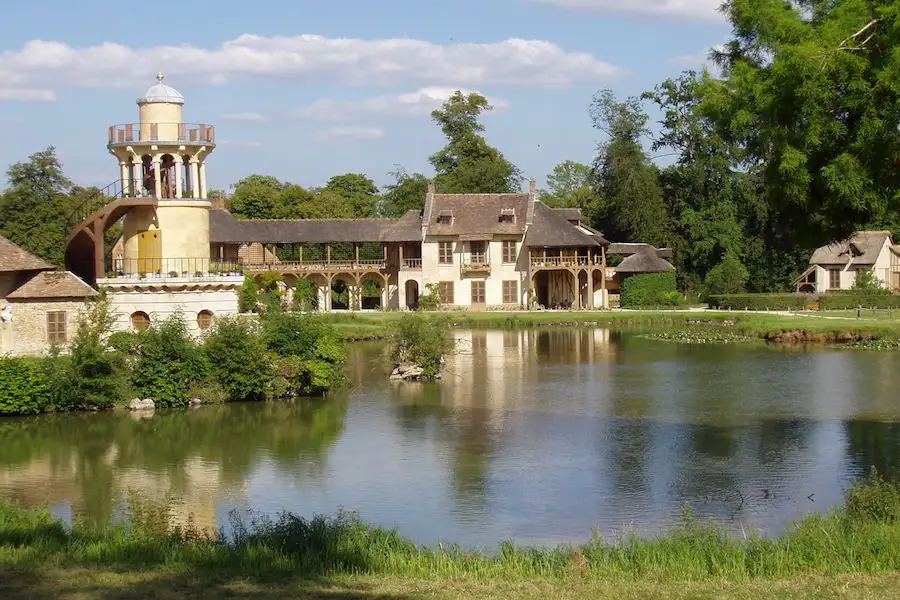
The Queen's Hamlet
 Highlight of Palace of Versailles
Highlight of Palace of VersaillesImagine living like the "peasants" here?
Desiring something different, Queen Marie Antoinette had a hamlet erected where she could supervise servants milking cows, tending pigs, collecting eggs from chickens. She dressed down to play her part, but apparently never got her hands dirty, as far as we know. Her peasant cottage only had two living rooms, a billiard room, a dining hall, and a library. If you are accustomed to palaces, only two living rooms is roughing it. Lest the queen got tired of it all, she could return to the Petit Trianon, a beautiful chateau built on the grounds of the Grand Trianon, which was the retreat chateau built on the grounds of the Palace of Versailles, which was a retreat from the Louvre Palace in Paris.
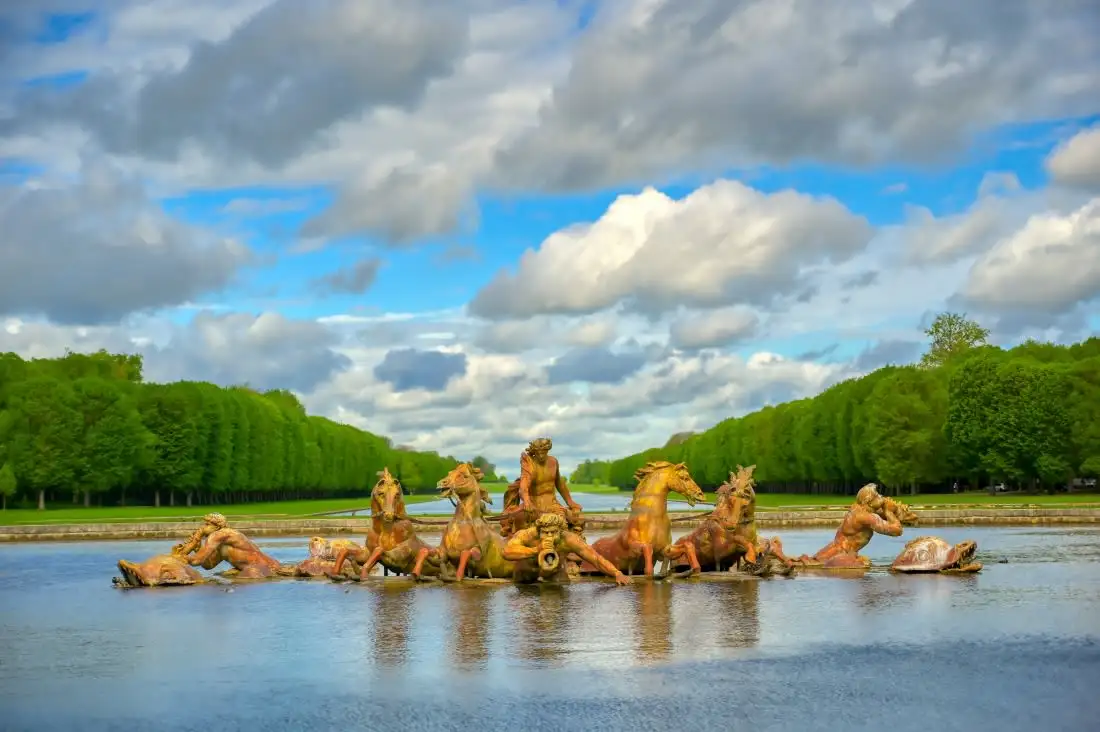
Parc de Versailles
 Highlight of Palace of Versailles
Highlight of Palace of VersaillesFeel like a king, feel like a queen, hopefully you'll feel good looking out across the park
The Parc de Versailles, features some 800 hectares of manicured lawns, stunning fountains, and the Grand Canal, all masterminded by André Le Nôtre. Highlights include the Neptune and Apollo Fountains, the Trianon Palaces, and the Queen's Hamlet. This vast garden symbolizes royal power, but you are welcomed to enjoy yourself on these pleasure grounds.
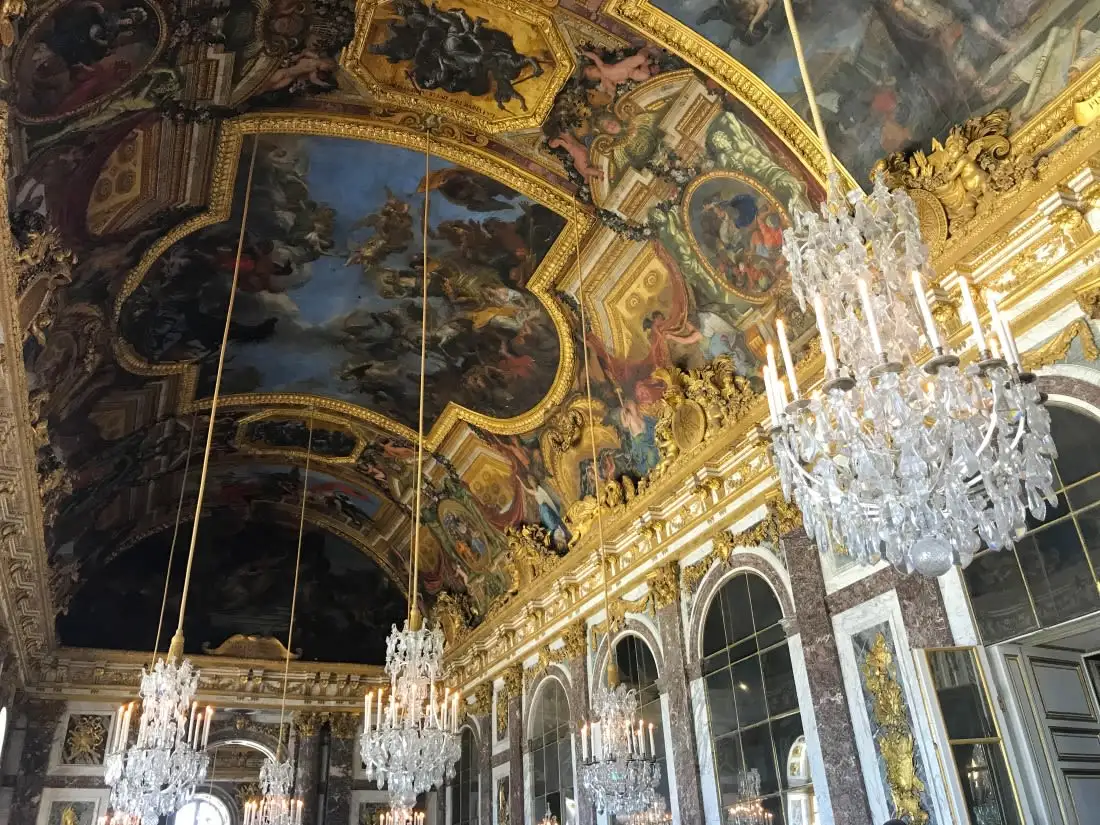
Main Palace of Versailles
 Highlight of Palace of Versailles
Highlight of Palace of VersaillesThere are palaces, and then there is Versailles...
Enlarged by for Emperor Louis XIV as an escape from the dreary political tension of Paris, Versailles might have been the most luxurious palace in the world. Even now, the building stuptifies with its grandeur and elegance, a stunning representation of the French monarchy's opulence. The famous Hall of Mirrors is just one of many, many (2300!) stunning rooms, only a small percentage of which are open for display. It might be too much, or one visit might never be enough.

The Queen's Hamlet
 Highlight of Palace of Versailles
Highlight of Palace of VersaillesImagine living like the "peasants" here?
Desiring something different, Queen Marie Antoinette had a hamlet erected where she could supervise servants milking cows, tending pigs, collecting eggs from chickens. She dressed down to play her part, but apparently never got her hands dirty, as far as we know. Her peasant cottage only had two living rooms, a billiard room, a dining hall, and a library. If you are accustomed to palaces, only two living rooms is roughing it. Lest the queen got tired of it all, she could return to the Petit Trianon, a beautiful chateau built on the grounds of the Grand Trianon, which was the retreat chateau built on the grounds of the Palace of Versailles, which was a retreat from the Louvre Palace in Paris.

Parc de Versailles
 Highlight of Palace of Versailles
Highlight of Palace of VersaillesFeel like a king, feel like a queen, hopefully you'll feel good looking out across the park
The Parc de Versailles, features some 800 hectares of manicured lawns, stunning fountains, and the Grand Canal, all masterminded by André Le Nôtre. Highlights include the Neptune and Apollo Fountains, the Trianon Palaces, and the Queen's Hamlet. This vast garden symbolizes royal power, but you are welcomed to enjoy yourself on these pleasure grounds.

Main Palace of Versailles
 Highlight of Palace of Versailles
Highlight of Palace of VersaillesThere are palaces, and then there is Versailles...
Enlarged by for Emperor Louis XIV as an escape from the dreary political tension of Paris, Versailles might have been the most luxurious palace in the world. Even now, the building stuptifies with its grandeur and elegance, a stunning representation of the French monarchy's opulence. The famous Hall of Mirrors is just one of many, many (2300!) stunning rooms, only a small percentage of which are open for display. It might be too much, or one visit might never be enough.

The Queen's Hamlet
 Highlight of Palace of Versailles
Highlight of Palace of VersaillesImagine living like the "peasants" here?
Desiring something different, Queen Marie Antoinette had a hamlet erected where she could supervise servants milking cows, tending pigs, collecting eggs from chickens. She dressed down to play her part, but apparently never got her hands dirty, as far as we know. Her peasant cottage only had two living rooms, a billiard room, a dining hall, and a library. If you are accustomed to palaces, only two living rooms is roughing it. Lest the queen got tired of it all, she could return to the Petit Trianon, a beautiful chateau built on the grounds of the Grand Trianon, which was the retreat chateau built on the grounds of the Palace of Versailles, which was a retreat from the Louvre Palace in Paris.
prev
next


Day 9
Paris
Day 9
Paris


Morning to Afternoon
Fountainebleau
A visit to Fontainebleau delights both the history buff and the outdoor enthusiast. Château Fontainebleau, one of most magestic palaces of the the kings and emperors of France, boasts an expansive structure and equally impressive grounds for hunting and other imperial pastimes. A walk through the chateau is a trip through centuries and the stories of some of the world's most powerful people. Equally, one may ignore the UNESCO-Heritage site, by exploring the Fontainbleau forests neighboring the palace. But again you will delight yourself just as royalty did, perambulating among the rich wildlife and whimsical sandstone structures shaped by millennia of wind and rain. But... distinguish yourself from the emperor and his entourage, try climbing in the forest: it is world-renowned for its bouldering routes.

Château de Fontainebleau
The size and ostentatious beauty of Fontainebleau Chateau will awe you
Show More

Forest of Fontainebleau
Escape the city with a nearby getaway to verdant forests and dramatic rock formations
Show More

Château de Fontainebleau
The size and ostentatious beauty of Fontainebleau Chateau will awe you
Show More

Forest of Fontainebleau
Escape the city with a nearby getaway to verdant forests and dramatic rock formations
Show More

Château de Fontainebleau
The size and ostentatious beauty of Fontainebleau Chateau will awe you
Show More

Forest of Fontainebleau
Escape the city with a nearby getaway to verdant forests and dramatic rock formations
Show More
prev
next

Day 9
Paris

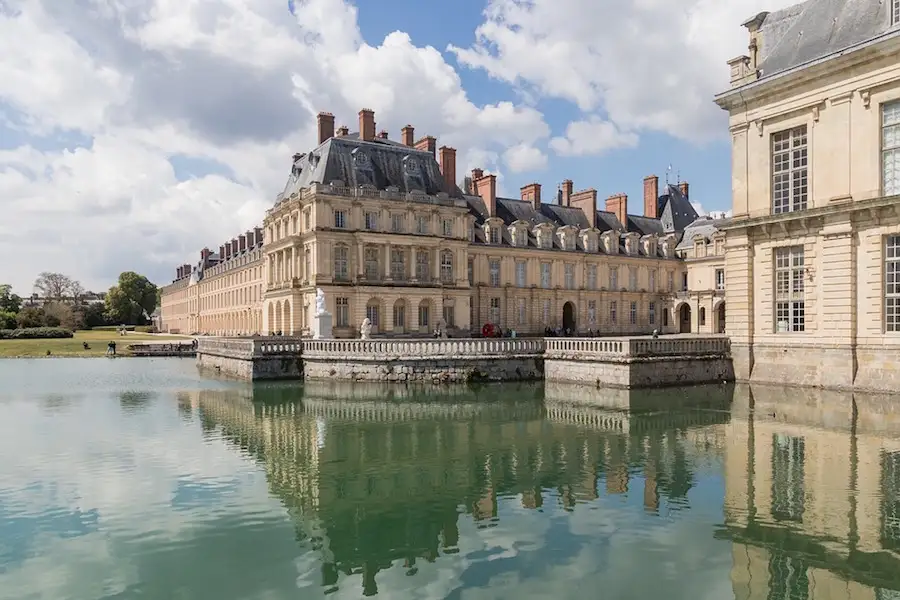
Château de Fontainebleau
 Highlight of Fountainebleau
Highlight of FountainebleauThe size and ostentatious beauty of Fontainebleau Chateau will awe you
Château de Fontainebleau, a UNESCO site in the eponymous town, hides over 800 years of French royal history in its majestic palace and gardens. Highlights include the opulent Grand Apartments, the Renaissance-rich Gallery of Francis I, vast formal gardens like the Grand Parterre, and the intriguing Horse Carriage Museum. This destination offers a full day's immersion into the splendor of French architecture, art, and history, making it a thrilling visit for those fascinated by France's regal past.

Forest of Fontainebleau
 Highlight of Fountainebleau
Highlight of FountainebleauEscape the city with a nearby getaway to verdant forests and dramatic rock formations
The Forest of Fontainebleau, located a short distance from Paris, offers a lush escape into one of France's most enchanting natural landscapes. This vast forest spans over 28,000 hectares (over 69,000 acres) and boasts rich biodiversity amid whimsical geological formations - sandstone boulders shaped by wind and rain to resemble elephants or mushrooms. A plethora of these rock formations also offer themselves to local and international climbers to enjoy a day of bouldering away from the city. A haven for outdoor enthusiasts, walk any number of hiking trails to discover tranquil spots for picnicking amidst ancient oak trees. The area has inspired artists, poets, and photographers for centuries; come and see what it will inspire in you!

Château de Fontainebleau
 Highlight of Fountainebleau
Highlight of FountainebleauThe size and ostentatious beauty of Fontainebleau Chateau will awe you
Château de Fontainebleau, a UNESCO site in the eponymous town, hides over 800 years of French royal history in its majestic palace and gardens. Highlights include the opulent Grand Apartments, the Renaissance-rich Gallery of Francis I, vast formal gardens like the Grand Parterre, and the intriguing Horse Carriage Museum. This destination offers a full day's immersion into the splendor of French architecture, art, and history, making it a thrilling visit for those fascinated by France's regal past.

Forest of Fontainebleau
 Highlight of Fountainebleau
Highlight of FountainebleauEscape the city with a nearby getaway to verdant forests and dramatic rock formations
The Forest of Fontainebleau, located a short distance from Paris, offers a lush escape into one of France's most enchanting natural landscapes. This vast forest spans over 28,000 hectares (over 69,000 acres) and boasts rich biodiversity amid whimsical geological formations - sandstone boulders shaped by wind and rain to resemble elephants or mushrooms. A plethora of these rock formations also offer themselves to local and international climbers to enjoy a day of bouldering away from the city. A haven for outdoor enthusiasts, walk any number of hiking trails to discover tranquil spots for picnicking amidst ancient oak trees. The area has inspired artists, poets, and photographers for centuries; come and see what it will inspire in you!

Château de Fontainebleau
 Highlight of Fountainebleau
Highlight of FountainebleauThe size and ostentatious beauty of Fontainebleau Chateau will awe you
Château de Fontainebleau, a UNESCO site in the eponymous town, hides over 800 years of French royal history in its majestic palace and gardens. Highlights include the opulent Grand Apartments, the Renaissance-rich Gallery of Francis I, vast formal gardens like the Grand Parterre, and the intriguing Horse Carriage Museum. This destination offers a full day's immersion into the splendor of French architecture, art, and history, making it a thrilling visit for those fascinated by France's regal past.

Forest of Fontainebleau
 Highlight of Fountainebleau
Highlight of FountainebleauEscape the city with a nearby getaway to verdant forests and dramatic rock formations
The Forest of Fontainebleau, located a short distance from Paris, offers a lush escape into one of France's most enchanting natural landscapes. This vast forest spans over 28,000 hectares (over 69,000 acres) and boasts rich biodiversity amid whimsical geological formations - sandstone boulders shaped by wind and rain to resemble elephants or mushrooms. A plethora of these rock formations also offer themselves to local and international climbers to enjoy a day of bouldering away from the city. A haven for outdoor enthusiasts, walk any number of hiking trails to discover tranquil spots for picnicking amidst ancient oak trees. The area has inspired artists, poets, and photographers for centuries; come and see what it will inspire in you!
prev
next


Day 10
Paris to Brussels
Day 10
Paris to Brussels





Morning
Montparnasse
Montparnasse grew in esthetic stature in the earlier 20th century, as artists congregated their for inexpensive living close to the center of Paris. Vestiges of this bohemian era remain, lively cafes and restaurants allude to painterly luminaries like Alphonse Mucha and Paul Gauguin. As interesting as their lives were, as busy as the neighborhood is, still more dramatic is what lies under Monparnasse: the Paris Catacombs, the final resting place of over 6 million Parisians dating back centuries.

Fondation Cartier
Supporting contemporary art in many luxurious ways
Show More

Montparnasse Tower
Get a different perspective from Paris' modern skyscraper
Show More

Catacombs of Paris - Entrance
Wander the corridors of this eerie but matter-of-fact underground filled with skeletal remains.
Show More

Bourdelle Museum
Immerse yourself in this a hidden treasure of Parisian art, the original atelier of celebrated sculptor, Antoine Bourdelle.
Show More

Fondation Cartier
Supporting contemporary art in many luxurious ways
Show More

Montparnasse Tower
Get a different perspective from Paris' modern skyscraper
Show More

Catacombs of Paris - Entrance
Wander the corridors of this eerie but matter-of-fact underground filled with skeletal remains.
Show More

Bourdelle Museum
Immerse yourself in this a hidden treasure of Parisian art, the original atelier of celebrated sculptor, Antoine Bourdelle.
Show More
prev
next

Day 10
Paris to Brussels


Fondation Cartier
 Highlight of Montparnasse
Highlight of MontparnasseSupporting contemporary art in many luxurious ways
Confront your artistic sensibilities, or maybe just luxuriate at the Fondation Cartier pour l'Art Contemporain, a cornerstone of contemporary art. Housed in an architectural masterpiece by Jean Nouvel that blends verdant surroundings with glass and steel, it showcases diverse exhibitions of both renowned and emerging global artists, alongside commissioned site-specific works. Contemplate today's masterpieces in the foundation's lush garden, designed by Lothar Baumgarten, that acts as a living art installation, complementing cultural programs like concerts, lectures, and the unique "Nomadic Nights" series.
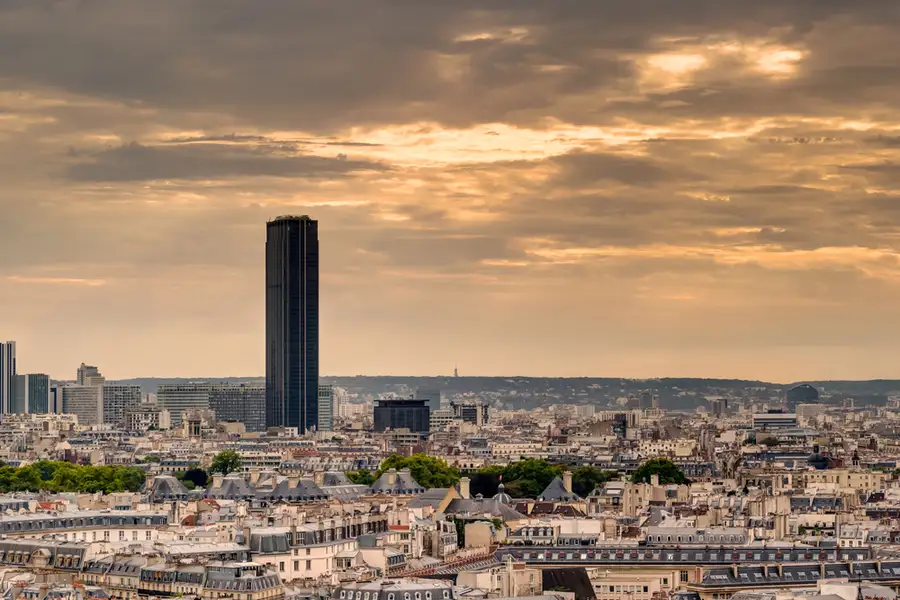
Montparnasse Tower
 Highlight of Montparnasse
Highlight of MontparnasseGet a different perspective from Paris' modern skyscraper
The Montparnasse Tower remains one of Paris' few traditional skyscrapers and with its rare standing offers an unparalleled vantage point from its 56th floor and rooftop terrace. Rising to a height of 210 meters, it punctuates the Parisian skyline and provides breathtaking 360-degree views that stretch out over the city, from the winding Seine to the majestic Eiffel Tower and beyond. Visitors can ascend this towering skyscraper to witness the beauty of Paris from above, capturing the essence of the city's layout and landmarks in a single glance.

Catacombs of Paris - Entrance
 Highlight of Montparnasse
Highlight of MontparnasseWander the corridors of this eerie but matter-of-fact underground filled with skeletal remains.
The Catacombs of Paris offer a disturbing journey beneath the city, where millions of Parisians' remains line the ancient corridors. From the stark warning at the entrance hall, inviting visitors into the Empire of Death, to the dark depths where the Crypt of the Sepulchral Lamp casts a solemn glow, each highlight contributes to the macabre atmosphere. Notable curiosities include the artistic Barrel of Passion, and the intricately carved Sculpture of Port-Mahon, both testaments to the catacombs' dual function as a burial site and a monument to humanity's strangeness.

Bourdelle Museum
 Highlight of Montparnasse
Highlight of MontparnasseImmerse yourself in this a hidden treasure of Parisian art, the original atelier of celebrated sculptor, Antoine Bourdelle.
The Antoine Bourdelle Museum, set in the artist's former studio in Montparnasse, showcases an impressive collection of his sculptures, paintings, and drawings. Here, visitors can experience the authentic atmosphere of Bourdelle's creative space and enjoy the serene garden, which displays his monumental works in bronze and marble. This intimate museum offers a unique glimpse into the artistic process of one of France's great sculptors.

Fondation Cartier
 Highlight of Montparnasse
Highlight of MontparnasseSupporting contemporary art in many luxurious ways
Confront your artistic sensibilities, or maybe just luxuriate at the Fondation Cartier pour l'Art Contemporain, a cornerstone of contemporary art. Housed in an architectural masterpiece by Jean Nouvel that blends verdant surroundings with glass and steel, it showcases diverse exhibitions of both renowned and emerging global artists, alongside commissioned site-specific works. Contemplate today's masterpieces in the foundation's lush garden, designed by Lothar Baumgarten, that acts as a living art installation, complementing cultural programs like concerts, lectures, and the unique "Nomadic Nights" series.

Montparnasse Tower
 Highlight of Montparnasse
Highlight of MontparnasseGet a different perspective from Paris' modern skyscraper
The Montparnasse Tower remains one of Paris' few traditional skyscrapers and with its rare standing offers an unparalleled vantage point from its 56th floor and rooftop terrace. Rising to a height of 210 meters, it punctuates the Parisian skyline and provides breathtaking 360-degree views that stretch out over the city, from the winding Seine to the majestic Eiffel Tower and beyond. Visitors can ascend this towering skyscraper to witness the beauty of Paris from above, capturing the essence of the city's layout and landmarks in a single glance.

Catacombs of Paris - Entrance
 Highlight of Montparnasse
Highlight of MontparnasseWander the corridors of this eerie but matter-of-fact underground filled with skeletal remains.
The Catacombs of Paris offer a disturbing journey beneath the city, where millions of Parisians' remains line the ancient corridors. From the stark warning at the entrance hall, inviting visitors into the Empire of Death, to the dark depths where the Crypt of the Sepulchral Lamp casts a solemn glow, each highlight contributes to the macabre atmosphere. Notable curiosities include the artistic Barrel of Passion, and the intricately carved Sculpture of Port-Mahon, both testaments to the catacombs' dual function as a burial site and a monument to humanity's strangeness.

Bourdelle Museum
 Highlight of Montparnasse
Highlight of MontparnasseImmerse yourself in this a hidden treasure of Parisian art, the original atelier of celebrated sculptor, Antoine Bourdelle.
The Antoine Bourdelle Museum, set in the artist's former studio in Montparnasse, showcases an impressive collection of his sculptures, paintings, and drawings. Here, visitors can experience the authentic atmosphere of Bourdelle's creative space and enjoy the serene garden, which displays his monumental works in bronze and marble. This intimate museum offers a unique glimpse into the artistic process of one of France's great sculptors.
prev
next


Day 11
Brussels
Day 11
Brussels



9:30 AM - 12:30 PM
Highlights Walking Tour
Discover the history of Brussels and its highlights on this 3-hour tour. Walk through the old town to see the famous Grand-Place, which Victor Hugo called, “the most beautiful square in the world. Nearby you will discover the unofficial symbol of Brussels – Manneken-pis. The tour also includes the halls Saint Géry, the serene royal palace, the Justice Palace, and more. By tour's end you will feel ready to explore Brussels on your own, or prepared for a delicious waffle!

Day 11
Brussels



Day 12
Brussels
Day 12
Brussels



Morning/Mid-Day
Royal Palace & Upper Town
The Royal Palace and Upper Town of Brussels exudes grandeur, blending the majesty of Belgium's monarchy with cultural sophistication. The Royal Palace, open in summer, showcases neoclassical splendor, while the Upper Town offers luxury shopping, art galleries, and lush parks. Key highlights include Mont des Arts, with its breathtaking city views and cultural institutions, and Place Royale, featuring historic sites and the Royal Museums of Fine Arts. Come for the refinement, stay for a café.
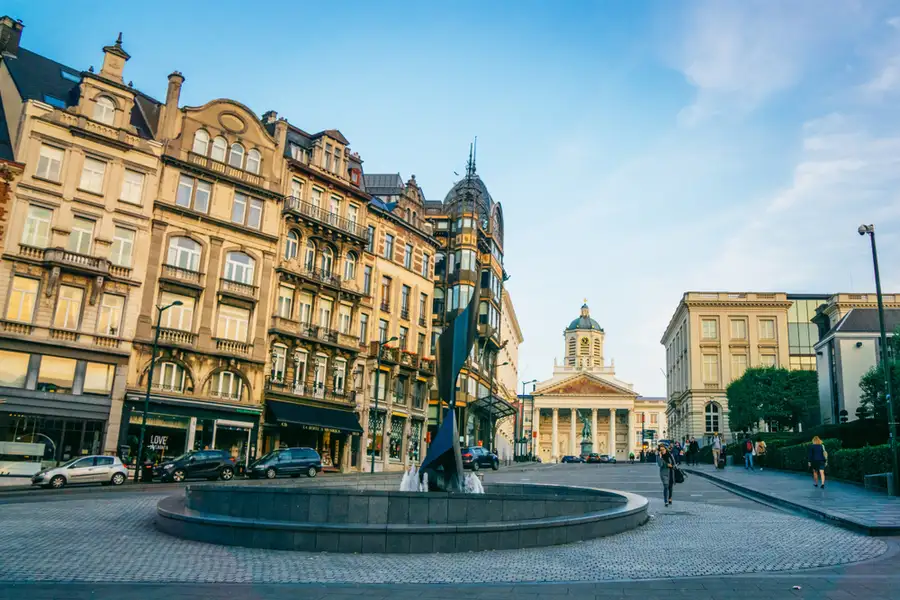
Coudenburg Palace
Take Archeological Notes at this Royal Ruin
Show More

Royal Palace
Accept an Invitation to the King's Chambers.
Show More
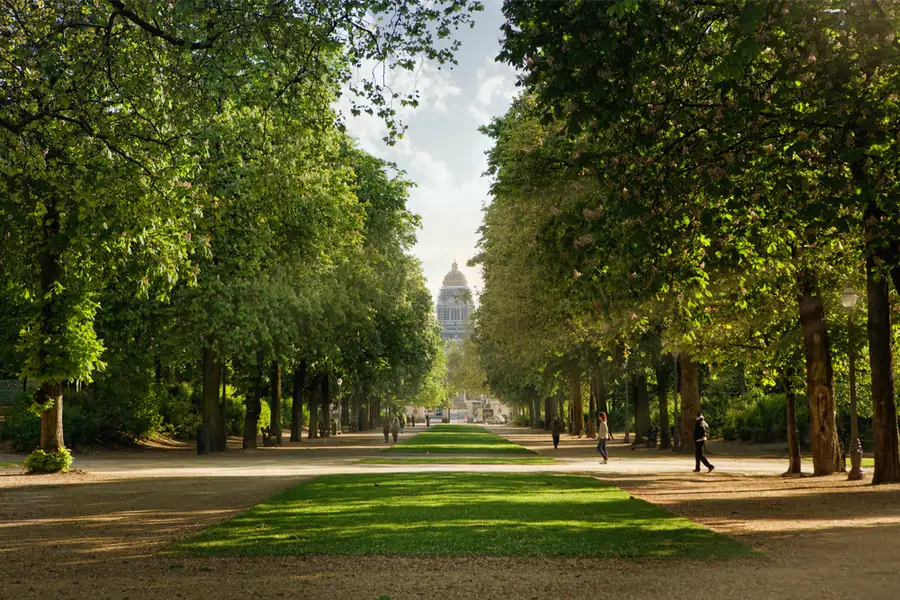
Brussels Park
Stroll this neoclassical park, breathe deeply, and relax. Repeat.
Show More

Coudenburg Palace
Take Archeological Notes at this Royal Ruin
Show More

Royal Palace
Accept an Invitation to the King's Chambers.
Show More

Brussels Park
Stroll this neoclassical park, breathe deeply, and relax. Repeat.
Show More

Coudenburg Palace
Take Archeological Notes at this Royal Ruin
Show More
prev
next

Day 12
Brussels


Coudenburg Palace
 Highlight of Royal Palace & Upper Town
Highlight of Royal Palace & Upper TownTake Archeological Notes at this Royal Ruin
Coudenberg Palace in Brussels, once a grand emblem of medieval royal power, now serves as a captivating subterranean museum. This historical site, transformed by a fire in 1731 into ruins, offers a unique glimpse into the past, inviting visitors to traverse the remnants of its royal halls and gardens. It's an intriguing journey through time, revealing the hidden layers of Brussels' history beneath its contemporary urban landscape.
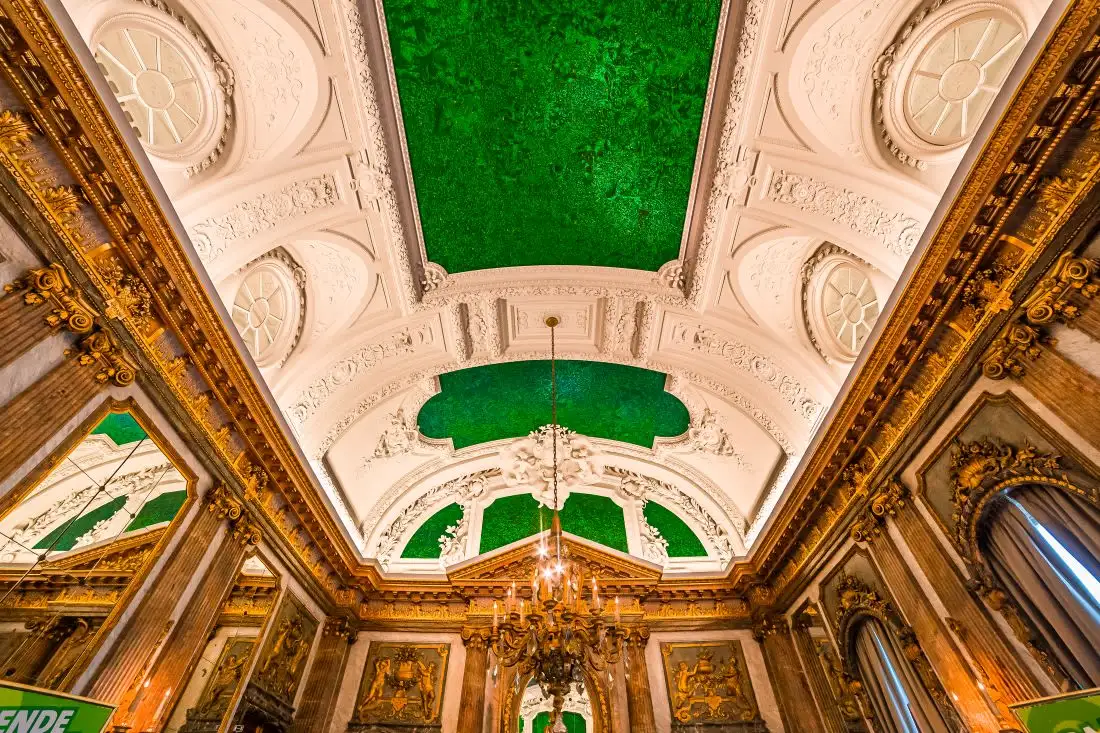
Royal Palace
 Highlight of Royal Palace & Upper Town
Highlight of Royal Palace & Upper TownAccept an Invitation to the King's Chambers.
The Royal Palace of Brussels stands as a magnificent symbol of the nation's monarchy and its rich historical heritage. Unlike other royal residences, the palace is not the king's home but serves as his administrative residence and workplace, where he performs most of his duties as the head of state. The facade of the palace, extending more grandly than that of Buckingham Palace, presents a stunning example of neoclassical architecture, making it a highlight for visitors to the city. Each summer, the palace opens its doors to the public, offering a unique opportunity to explore its opulent interiors.

Brussels Park
 Highlight of Royal Palace & Upper Town
Highlight of Royal Palace & Upper TownStroll this neoclassical park, breathe deeply, and relax. Repeat.
Brussels Park, nestled between the Royal Palace and the Belgian Parliament, is the largest urban park in Brussels. It offers a peaceful retreat with its lush landscapes, ornamental ponds, and classical statues. Ideal for strolls, picnics, and cultural events, the park is a lively spot for both relaxation and entertainment. Its scenic paths, venerable trees and historic monuments make it a serene and engaging experience in the city.

Coudenburg Palace
 Highlight of Royal Palace & Upper Town
Highlight of Royal Palace & Upper TownTake Archeological Notes at this Royal Ruin
Coudenberg Palace in Brussels, once a grand emblem of medieval royal power, now serves as a captivating subterranean museum. This historical site, transformed by a fire in 1731 into ruins, offers a unique glimpse into the past, inviting visitors to traverse the remnants of its royal halls and gardens. It's an intriguing journey through time, revealing the hidden layers of Brussels' history beneath its contemporary urban landscape.

Royal Palace
 Highlight of Royal Palace & Upper Town
Highlight of Royal Palace & Upper TownAccept an Invitation to the King's Chambers.
The Royal Palace of Brussels stands as a magnificent symbol of the nation's monarchy and its rich historical heritage. Unlike other royal residences, the palace is not the king's home but serves as his administrative residence and workplace, where he performs most of his duties as the head of state. The facade of the palace, extending more grandly than that of Buckingham Palace, presents a stunning example of neoclassical architecture, making it a highlight for visitors to the city. Each summer, the palace opens its doors to the public, offering a unique opportunity to explore its opulent interiors.

Brussels Park
 Highlight of Royal Palace & Upper Town
Highlight of Royal Palace & Upper TownStroll this neoclassical park, breathe deeply, and relax. Repeat.
Brussels Park, nestled between the Royal Palace and the Belgian Parliament, is the largest urban park in Brussels. It offers a peaceful retreat with its lush landscapes, ornamental ponds, and classical statues. Ideal for strolls, picnics, and cultural events, the park is a lively spot for both relaxation and entertainment. Its scenic paths, venerable trees and historic monuments make it a serene and engaging experience in the city.

Coudenburg Palace
 Highlight of Royal Palace & Upper Town
Highlight of Royal Palace & Upper TownTake Archeological Notes at this Royal Ruin
Coudenberg Palace in Brussels, once a grand emblem of medieval royal power, now serves as a captivating subterranean museum. This historical site, transformed by a fire in 1731 into ruins, offers a unique glimpse into the past, inviting visitors to traverse the remnants of its royal halls and gardens. It's an intriguing journey through time, revealing the hidden layers of Brussels' history beneath its contemporary urban landscape.
prev
next


Day 13
Brussels
Day 13
Brussels

Morning to Afternoon
Bruges, Self-Guided
By the 14th century, Bruges was one of the largest and most important cities in northern Europe. Often referred to as "Venice of the North," the canals and medieval architecture create a picturesque day trip from Brussels with plenty of things to see and do. Medieval remains in the city include the Market Hall, Belfry Tower and Town Hall. The Chapel of the Holy Blood contains the Chapel of St. Basil and a gold casket that is reputed to hold a few drops of Christ’s blood brought from the Holy Land in 1150. Bruges deserves your attention. This gem of medieval Europe is preserved in every cobblestone and canal. Wander through the enchanting streets of this UNESCO World Heritage city, where every turn reveals architectural marvels and echoes of a rich historical tapestry. Walk across fairy-tale bridges, marvel at the towering belfry that dominates the skyline, and enjoy the illustrious Markt square, pulsating with life and color. Indulge in a hot waffle, savor the world-renowned beers in quaint breweries, and explore the mystical Lake of Love. Let Bruges woo you with its timeless allure.

Historium Bruges
Learn About the Role of Bruges in the Late-Medieval World... It Wasn't a Small Role
Show More
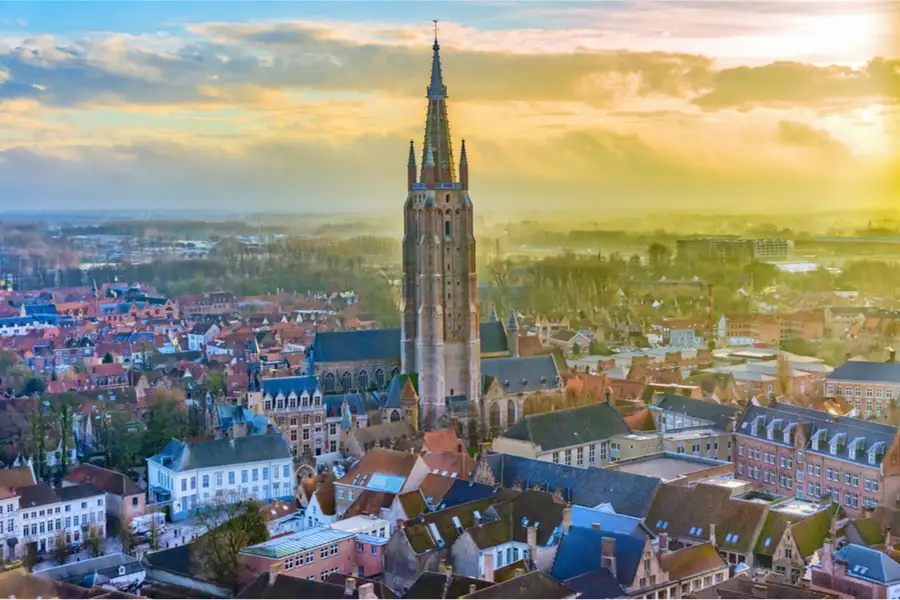
Church of Our Lady Bruges
Crane Your Neck to See the Heights of This Medieval Marvel
Show More
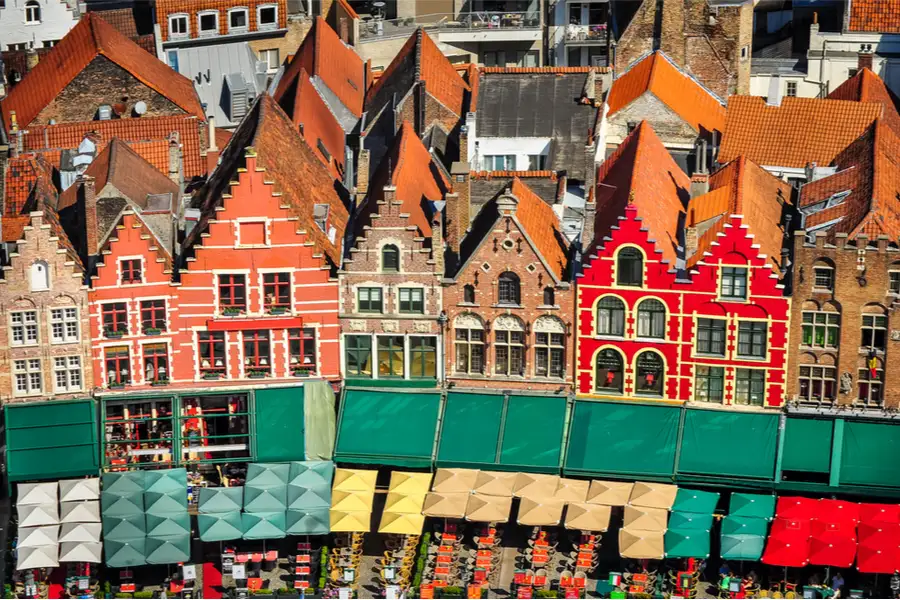
Bruges Markt
Ogle the expressive architecture of the Markt square in Bruges
Show More

Belfry of Bruges
Hear the 47 Chiming Bells of This UNESCO-Heritage Tower
Show More

Historium Bruges
Learn About the Role of Bruges in the Late-Medieval World... It Wasn't a Small Role
Show More

Church of Our Lady Bruges
Crane Your Neck to See the Heights of This Medieval Marvel
Show More

Bruges Markt
Ogle the expressive architecture of the Markt square in Bruges
Show More

Belfry of Bruges
Hear the 47 Chiming Bells of This UNESCO-Heritage Tower
Show More
prev
next

Day 13
Brussels


Historium Bruges
 Highlight of Bruges, Self-Guided
Highlight of Bruges, Self-GuidedLearn About the Role of Bruges in the Late-Medieval World... It Wasn't a Small Role
The Historium Bruges is an immersive attraction located in the Market Square that transports visitors to the 15th century, showcasing the city's Golden Age. Through virtual reality, recreated scenes, and storytelling, it highlights Bruges as a vibrant medieval trade and cultural center. The experience is enhanced by panoramic views of the Market Square from the Historium's terrace, making it a key destination for those interested in exploring the historical depth of Bruges.

Church of Our Lady Bruges
 Highlight of Bruges, Self-Guided
Highlight of Bruges, Self-GuidedCrane Your Neck to See the Heights of This Medieval Marvel
The Church of Our Lady in Bruges, a towering example of Gothic architecture, is notable for its height, and it even houses a Michelangelo sculpture of the Madonna and Child, a rarity outside Italy. Dating back to the 13th-century, it contains the tombs of the heroic Charles the Bold and Mary of Burgundy, among other art treasures. Its serene interior, with vaulted ceilings and stained glass, draws visitors into its history and spirit.

Bruges Markt
 Highlight of Bruges, Self-Guided
Highlight of Bruges, Self-GuidedOgle the expressive architecture of the Markt square in Bruges
The Markt of Bruges is the city's historic heart, featuring the towering, medieval Belfry, ornate guild houses, and a statue symbolizing independence, all accompanied by vibrant shops and cafes. This square wears Bruges' medieval history on its sleeve, drawing tourists and locals alike to its sights.

Belfry of Bruges
 Highlight of Bruges, Self-Guided
Highlight of Bruges, Self-GuidedHear the 47 Chiming Bells of This UNESCO-Heritage Tower
The Belfry of Bruges stands as a central landmark in the historic heart of Bruges. This iconic structure, soaring 83 meters into the sky, draws visitors back into the Middle Ages. Climbing its 366 steps rewards with breathtaking panoramic views of the city's cobblestone streets and charming canals. The Belfry traditionally housed the city archives and served as a treasury. Its carillon, comprising 47 melodious bells, continues to enchant the city's air. It also plays a central role in the film In Bruges.

Historium Bruges
 Highlight of Bruges, Self-Guided
Highlight of Bruges, Self-GuidedLearn About the Role of Bruges in the Late-Medieval World... It Wasn't a Small Role
The Historium Bruges is an immersive attraction located in the Market Square that transports visitors to the 15th century, showcasing the city's Golden Age. Through virtual reality, recreated scenes, and storytelling, it highlights Bruges as a vibrant medieval trade and cultural center. The experience is enhanced by panoramic views of the Market Square from the Historium's terrace, making it a key destination for those interested in exploring the historical depth of Bruges.

Church of Our Lady Bruges
 Highlight of Bruges, Self-Guided
Highlight of Bruges, Self-GuidedCrane Your Neck to See the Heights of This Medieval Marvel
The Church of Our Lady in Bruges, a towering example of Gothic architecture, is notable for its height, and it even houses a Michelangelo sculpture of the Madonna and Child, a rarity outside Italy. Dating back to the 13th-century, it contains the tombs of the heroic Charles the Bold and Mary of Burgundy, among other art treasures. Its serene interior, with vaulted ceilings and stained glass, draws visitors into its history and spirit.

Bruges Markt
 Highlight of Bruges, Self-Guided
Highlight of Bruges, Self-GuidedOgle the expressive architecture of the Markt square in Bruges
The Markt of Bruges is the city's historic heart, featuring the towering, medieval Belfry, ornate guild houses, and a statue symbolizing independence, all accompanied by vibrant shops and cafes. This square wears Bruges' medieval history on its sleeve, drawing tourists and locals alike to its sights.

Belfry of Bruges
 Highlight of Bruges, Self-Guided
Highlight of Bruges, Self-GuidedHear the 47 Chiming Bells of This UNESCO-Heritage Tower
The Belfry of Bruges stands as a central landmark in the historic heart of Bruges. This iconic structure, soaring 83 meters into the sky, draws visitors back into the Middle Ages. Climbing its 366 steps rewards with breathtaking panoramic views of the city's cobblestone streets and charming canals. The Belfry traditionally housed the city archives and served as a treasury. Its carillon, comprising 47 melodious bells, continues to enchant the city's air. It also plays a central role in the film In Bruges.
prev
next

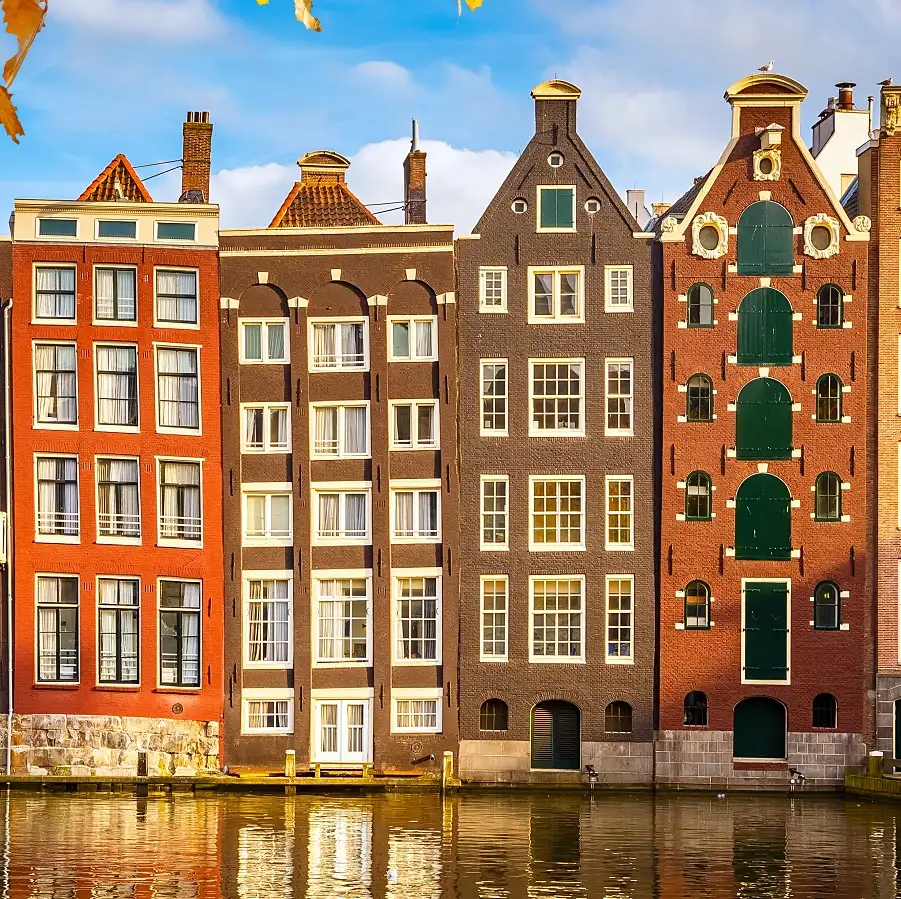
Day 14
Brussels to Amsterdam
Day 14
Brussels to Amsterdam






7:50 AM
Taxi Dropoff at Rail Station
Brussels taxis are generally reliable and honest, so this is cheaper than a pre-arranged transfer. If you are picked up one hour prior to departure, you should have plenty of time to catch your train.

Day 14
Brussels to Amsterdam



Day 15
Amsterdam
Day 15
Amsterdam



9:00 AM - 1:00 PM
Highlights Walking Tour
Enjoy an introduction to Amsterdam with this 4-hour private guided walking tour. After picking you up from your hotel, your professional guide will lead you past many of the city's highlights, including its center, as well as the Jordaan, the Grachtengordel, and the infamous Red-Light District. The guide will explain how all these feature in the city's history and contemporary life. Your guide will be happy to share some great tips for the rest of your stay.

Day 15
Amsterdam


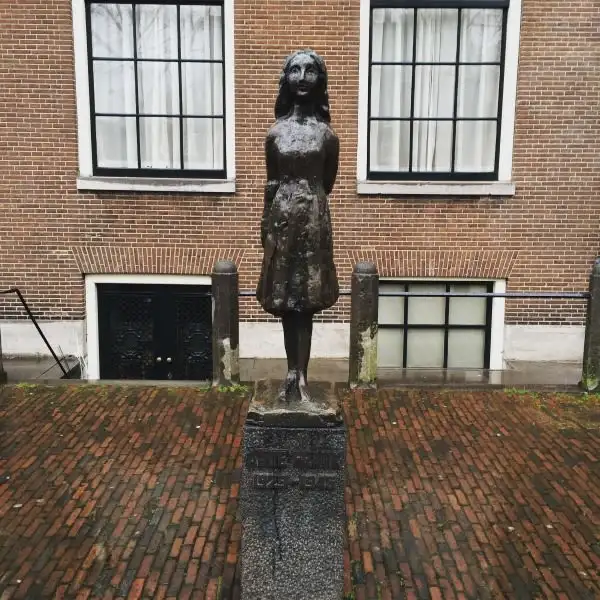
Day 16
Amsterdam
Day 16
Amsterdam


9:00 AM - 2:00 PM
Anne Frank House - Guided
Travel back in time to the Amsterdam of WWII where Anne Frank and her family were in hiding and visit the Anne Frank House on this 4.5 tour of Jewish Amsterdam. Learn about Amsterdam’s rich Jewish history by passing landmarks of the Jewish quarter. Your visit includes the Anne Frank House Museum (inclusive of tickets).

Day 16
Amsterdam



Day 17
Depart Amsterdam
Day 17
Depart Amsterdam

To Be Determined
Taxi Transfer to Airport
Amsterdam has one main airport, Amsterdam Airport Schiphol. The most affordable and often fastest way to reach the airport is by train. Local direct trains to the airport depart every ten minutes, usually from platform 14a or platform 15, and get you there in about 20 minutes. Your hotel can arrange a reliable taxi or if you have the app, Uber is also a good option. You can also arrange a private transfer. If you are picked up about two hours and 45 minutes before your departure time, you should arrive at the airport with about two hours to spare, depending on traffic. If you are leaving during rush hour, you may want to budget an extra fifteen to thirty minutes.

Day 17
Depart Amsterdam


What's Included In Grand Tour of Northern Europe Trip

Pre-Paid Tours and Activities:
- Guided Walk Tour of Historic Munich
- Guided Walking Tour of the Heidelberg's Altstadt and Castle
- Private Guided Walking Tour of the Center of Paris
- Private Guided Walking Tour of Brussels
- Privately Guided Walking Tour of Amsterdam
- Canal Cruise in Amsterdam
- Guided Visit to Anne Frank House & Jewish Quarter
- City Card for Munich, including discounts to many popular attractions

Pre-Paid Transportation:
- 2nd Class Train Tickets from Munich to Mannheim
- 2nd Class Train Tickets from Mannheim to Heidelberg
- 2nd Class Train Tickets from Heidelberg to Karlsruhe
- 2nd Class Train Tickets from Karlsruhe to Paris
- 2nd Class Train Tickets from Paris Nord to Bruxelles Midi
- 2nd Class Train Tickets from Bruxelles-Central to Amsterdam Centraal
- Public Transport Tickets for Munich and Amsterdam

Accommodation:
- 3 nights at a hotel of your choice in Munich
- 2 nights at a hotel of your choice in Heidelberg
- 4 nights at a hotel of your choice in Paris
- 4 nights at a hotel of your choice in Brussels
- 3 nights at a hotel of your choice in Amsterdam

Go Real Travel Mobile App:
- Itinerary Plan & Reservations Info
- Points of Interest
- Detailed Travel Information
- Maps & Directions
Other Trips You May Like

7 Days
From$2079USD

10 Days
From$2980USD

13 Days
From$3699USD

10 Days
From$2995USD

14 Days
From$3895USD

9 Days
From$2829USD

10 Days
From$3099USD
A Journey Through Culture and Time in Paris, Amsterdam, and Germany

France, Netherlands, Germany

14 Days
From$4050USD

21 Days
From$5199USD
Canals, Castles, and Culture: A Three-Week Journey in the Netherlands & Germany

Netherlands, Germany

7 Days
From$2079USD

10 Days
From$2980USD

13 Days
From$3699USD

10 Days
From$2995USD

14 Days
From$3895USD

9 Days
From$2829USD

10 Days
From$3099USD
A Journey Through Culture and Time in Paris, Amsterdam, and Germany

France, Netherlands, Germany

14 Days
From$4050USD

21 Days
From$5199USD
Canals, Castles, and Culture: A Three-Week Journey in the Netherlands & Germany

Netherlands, Germany
prev
next
Featured Blogs
prev
next
Our Customers Say It Best
Marianne Strydom, Paarl, South Africa
I just wanted to thank you for organizing an amazing trip for me – I packed in so much in such a short period of time and everything was just perfect. The way you do things makes it possible to really get to know the destination, which for me as a travel agent could not have been better. 

Otto Chuy, Los Angeles, California
I am still surprised how everything worked as planned, without a hitch. All instructions in your itinerary were precise and correct. Your suggestions and comments in each of the locations we went to were very helpful. All your guides, without exception, were wonderful and exactly on time. 

Malini Dutta, Boston, Massachusetts
We can't thank you enough for the detailed plans, maps, and suggestions. It really felt that someone was holding our hands and showing us around. We had all the excitement of discovering foreign lands, with none of the problems that can happen while negotiating unfamiliar places. In fact, all the cities felt like home within a few hours of arriving and exploring. 

Bev and Mark Frankel, Williamsburg, Virginia
We could not be more pleased with Go Real Travel! You took the guess work out of things like public transport but still managed to allow us the freedom to tour as we wanted. Our guides were exceptional and every time I saw a Viking Cruise tour of 25 people, I realized the quality experience we were getting with Go Real. 

Marianne Strydom, Paarl, South Africa
I just wanted to thank you for organizing an amazing trip for me – I packed in so much in such a short period of time and everything was just perfect. The way you do things makes it possible to really get to know the destination, which for me as a travel agent could not have been better. 

Otto Chuy, Los Angeles, California
I am still surprised how everything worked as planned, without a hitch. All instructions in your itinerary were precise and correct. Your suggestions and comments in each of the locations we went to were very helpful. All your guides, without exception, were wonderful and exactly on time. 

Malini Dutta, Boston, Massachusetts
We can't thank you enough for the detailed plans, maps, and suggestions. It really felt that someone was holding our hands and showing us around. We had all the excitement of discovering foreign lands, with none of the problems that can happen while negotiating unfamiliar places. In fact, all the cities felt like home within a few hours of arriving and exploring. 

Bev and Mark Frankel, Williamsburg, Virginia
We could not be more pleased with Go Real Travel! You took the guess work out of things like public transport but still managed to allow us the freedom to tour as we wanted. Our guides were exceptional and every time I saw a Viking Cruise tour of 25 people, I realized the quality experience we were getting with Go Real. 



Explore cities in more detail
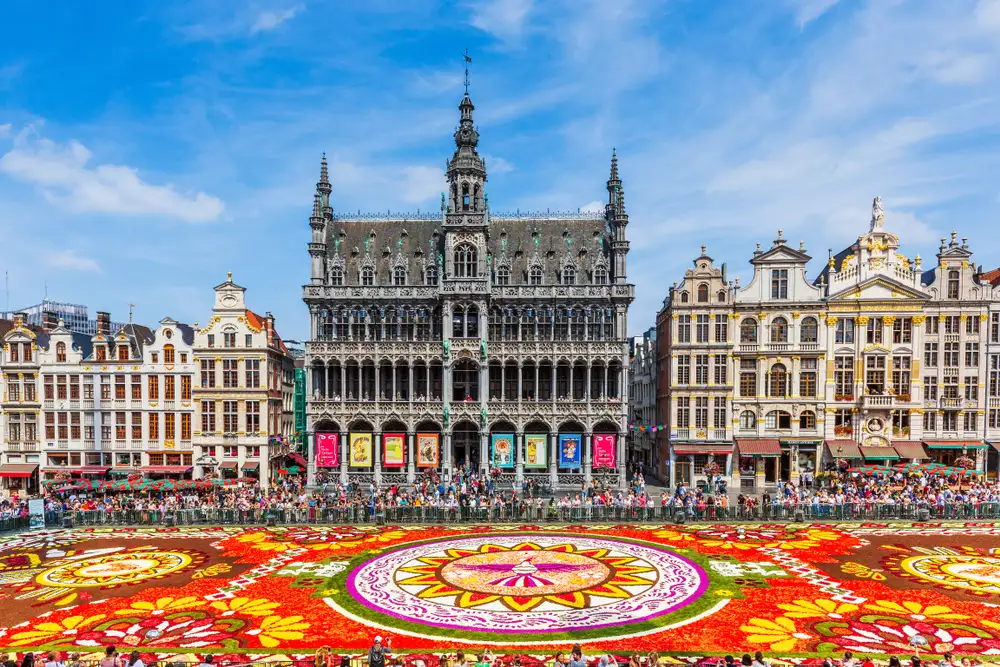
Brussels
It feels as though everything in Brussels is tinted with gold. From the gilded rooftops of the old houses on the Grand Palace to the foil-wrapped bonbons piled in chocolatier windows, Brussels seems to sparkle and wink at you around every corner. Aside from the lustrous architecture and Trappist ales, this shiny city is probably still best known for its iconic street food options: salty, golden fries, and fluffy, honey-colored waffles. While a major political center, home of the EU and NATO, don’t be fooled by Brussels stern ‘Eurocratic’ facade. Brussels revels in cheeky humor and mischief. So much so, Brussel’s beloved mascot, the ‘Manneken Pis’, is a statue of a small child urinating into a fountain. The city takes great pleasure in dressing this statue in festive-themed costumes. It’s no surprise that the artist Magritte, one of the great visual tricksters of the 20th century, called Brussels home. After a few days exploring the city, and taking in its sights and scenes, you’re sure to come away smiling.

Learn About Brussels
Build Brussels Trip
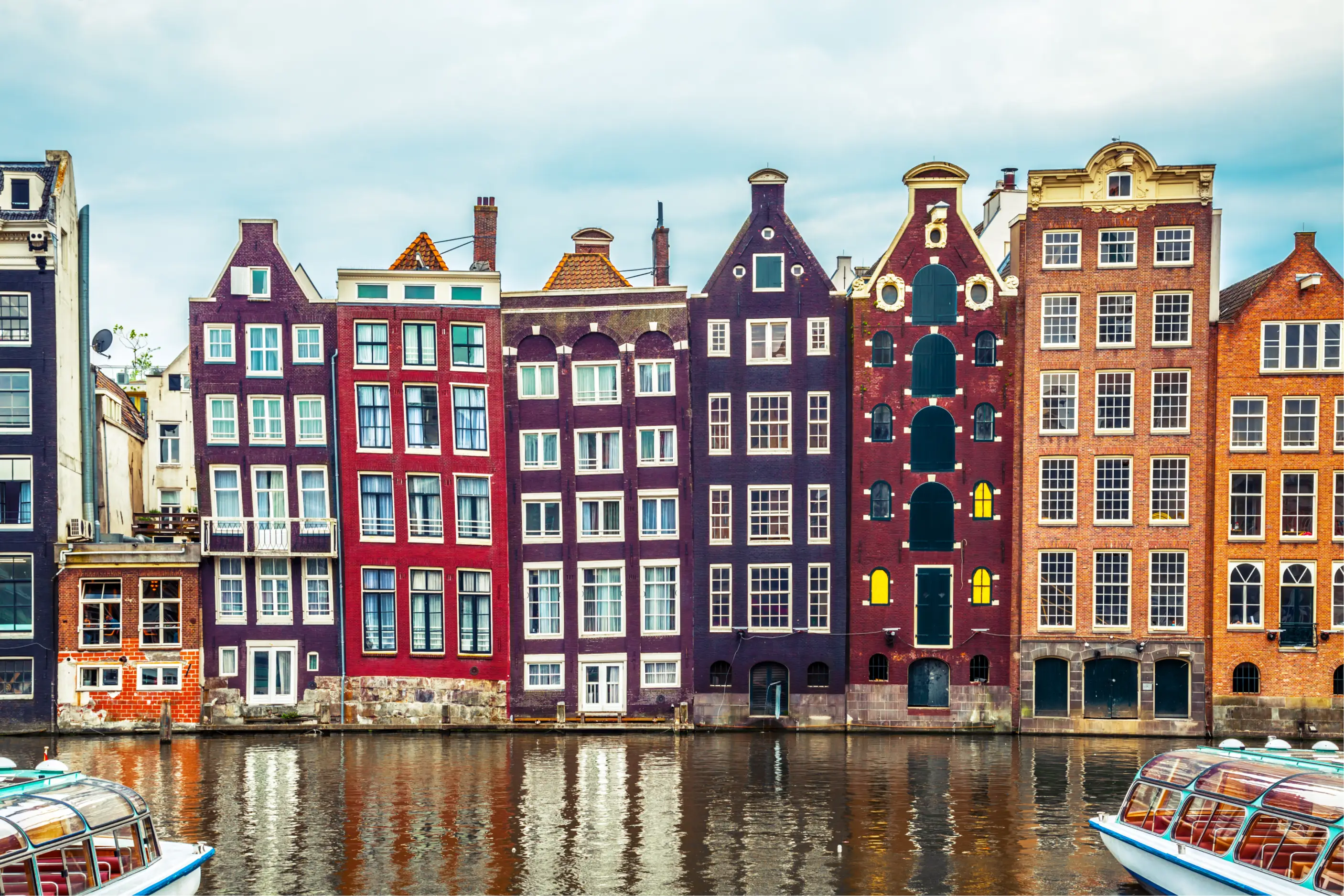
Amsterdam
A waterside metropolis with a low-key vibe, a visit to Amsterdam is as fun and freewheeling as a fixed-gear bicycle. This is the city where you can let it all go. The streets of Amsterdam chime with bicycle bells and the laughter of people making their way between bars. Yellow wheels of cheese line shop windows, and in springtime, market stalls are abundant with the famous Dutch tulips. Younger than other cities in the Netherlands, Amsterdam sprang to life in the 17th century, when it became flush with trade from the Dutch colonies. From the gable tipped houses standing shoulder-to-shoulder on the canals to the Rembrandt paintings hanging on the walls of the Rijksmuseum, Amsterdam is strewn with relics from the Dutch Golden Age. Whether you rent a bicycle, float down a canal, or just sip on an amber-colored lager and watch the world go by, Amsterdam makes a lasting impression from start to finish.

Learn About Amsterdam
Build Amsterdam Trip
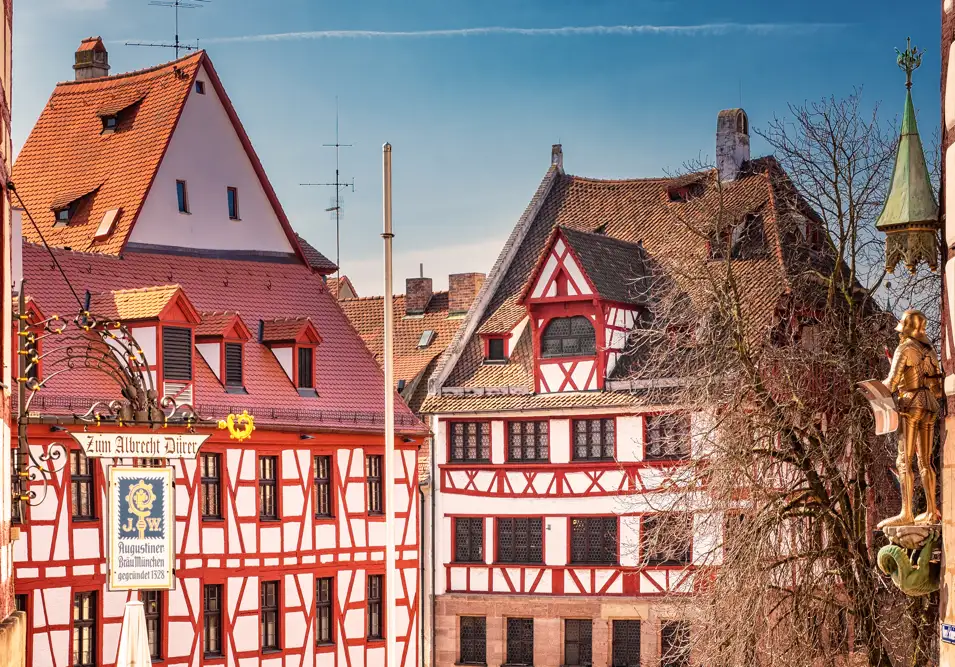
Nuremberg
One of the most authentic, storied German destinations, Nuremberg's picturesque old town, glorious castle, and buzzing Christmas Market makes this city a time-true classic. The ideal gateway to old Bavaria, Nuremberg offers a primer in German history before you embark on the lovely journey through old Bavaria, known as the Romantic Road. Considered the capital of the Holy Roman Empire in the middle ages, Nuremberg would have felt like the center of the world as a procession of kings and emperors passed through its magnificent gates. When the German Renaissance came, Nuremberg was at its heart. Albrecht Dürer, the great German master artist, was born here, and Martin Luther called Nuremberg Germany's 'eyes and ears'. Skip forward a few centuries, and the city took a dark turn, as Nuremberg became a gathering point for the German National Socialists. Slightly outside of town, you can still find the Nazi Party Rallying Grounds, a sobering reminder of the not so distant past. If it all gets too heavy, you can end the day with a glass of rotbier (red beer) and mull it over. Nuremberg is a must-see for anyone who wants to delve into Germany's past.

Learn About Nuremberg
Build Nuremberg Trip
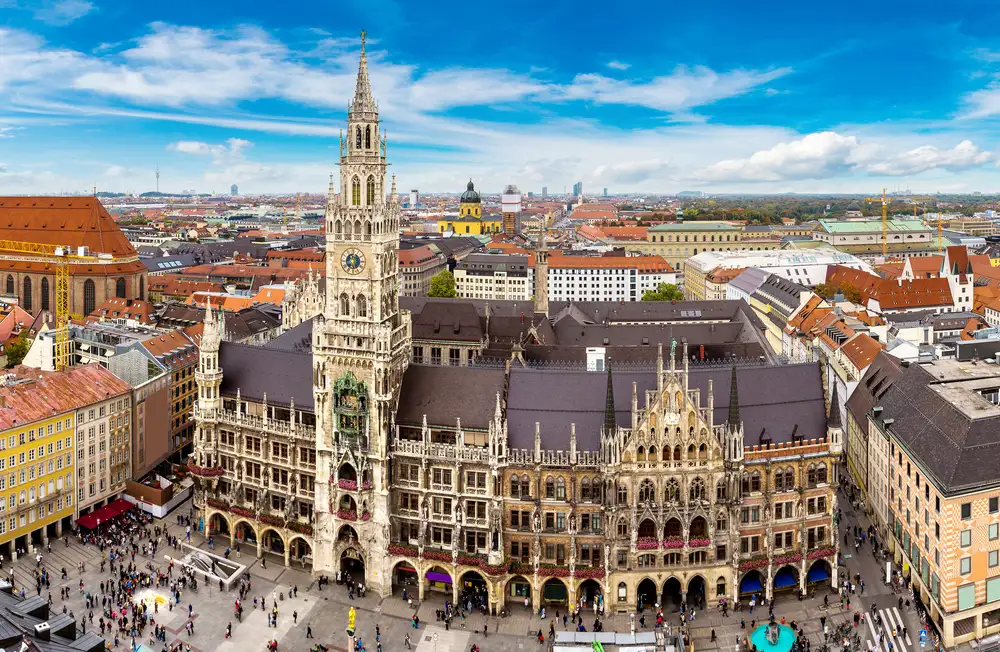
Munich
Arriving in Munich, you would be forgiven for thinking you were on the set of a movie about old Bavaria. At the Old Town beer halls, barmaids laced in dirndl dresses serve up frosty Helles lager, as oom-pah music drifts across the Marienplatz square. Men in lederhosen and checked shirts merrily give toasts as they knock glasses, or steins, as they’re known here. They sit at tables laden with wurst sausage and giant pretzels oozing with herby butter. This is Germany’s Germany, a place where folk traditions never stopped, and the revelry doesn’t either. Even when it isn’t Oktoberfest, the town’s notorious beer-drinking celebration, Munich is always happy to show you a good time. Simply cast your eyes around the lavish, gilded banquet hall at the Munich Residenz, the 13th-century Wittelsbach palace. You’ll see Munich has been impressing guests for centuries. Or, swing by the BMW Museum and check out the classic German cars. They even let you sit inside to test out the new models. At the city’s English Gardens, surfers ride waves on one of the park’s rivers. Munich is filled to the brim with this kind of pure-hearted German fun.

Learn About Munich
Build Munich Trip
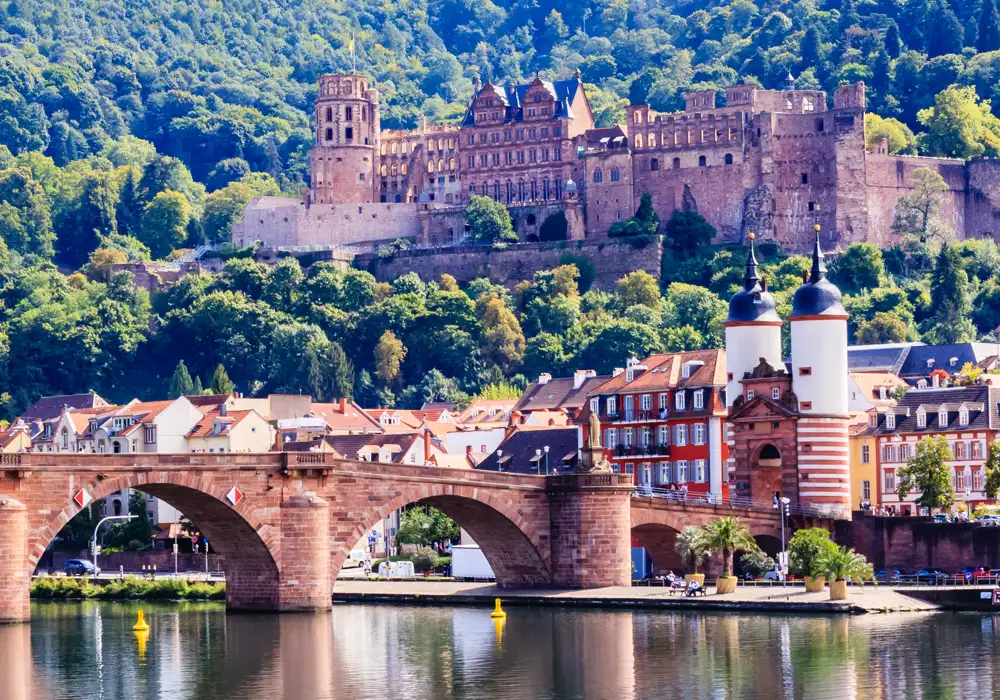
Heidelberg
Heidelberg is buried deep in the forests of southwest Germany. Flanking both sides of the Neckar River, Heidelberg's red and white baroque old town looks like something from a book of folktales. On the hillside above the town, you'll see the looming, tumbledown remains of Heidelberg's Gothic-Renaissance castle, Heidelberger Schloss. The subject of strange local legends, Heidelberg Castle was once home to knights, a famous court jester, and even a witch. It is said the first person who pulls out an iron ring embedded in one of the great doors will be the castle's true owner. Surely on your visit, it's worth a try? Across the river, follow in the footsteps of scholars on a hiking trail known as The Philosophers’ Way. Heidelberg University is the oldest in Germany, and its leafy, temple-like campus contributes to the gentle, contemplative atmosphere of the town. A poetic city with the dreamy feel of a watercolor painting, it's no wonder Heidelberg inspired writers like Mark Twain and Johann Wolfgang von Goethe. The city has even been recognized by UNESCO as a City of Literature. Especially on misty, grey days, Heidelberg has a way of sweeping you up in its romanticism.

Learn About Heidelberg
Build Heidelberg Trip
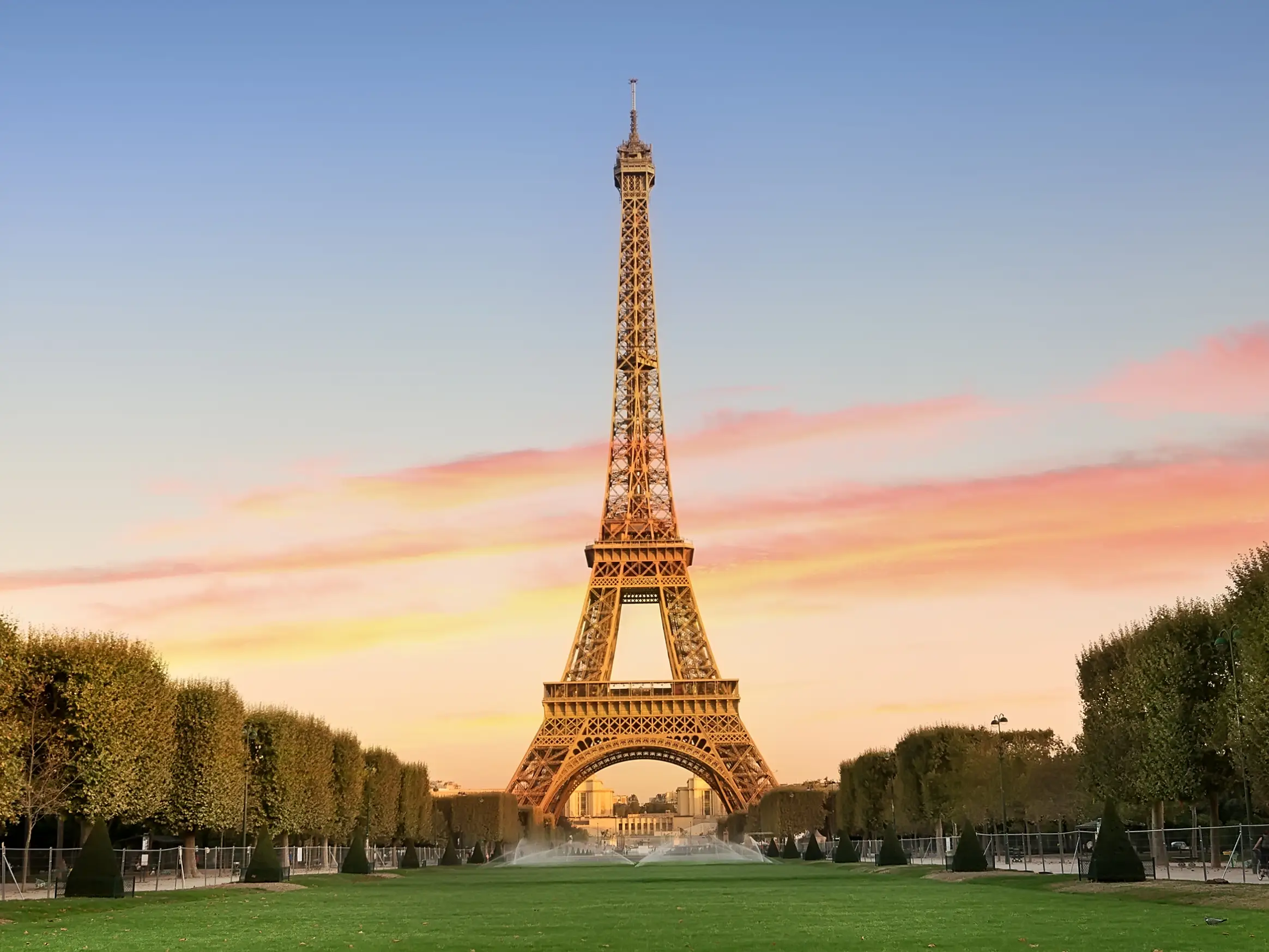
Paris
The magic of Paris is undeniable. This is the most romantic destination in Europe, and surely the number one bucket list destination of all time. If you want to say you've traveled, you have to visit Paris at least once. Along with classic must-sees like the Eiffel Tower and the Sacre-Coeur, there is so much to see and do in Paris that it helps to narrow it down by interest. Fashion and shopping enthusiast? Look no further than the Galeries Lafayette, Avenue des Champs-Élysées, or the Marais. Art aficionado? Once you're done with the Louvre, make a start on the Musée d'Orsay. History buffs won't be able to walk a block without uncovering a monument to Napoleon or Louis XIV. If you visit Paris with a foodie, be warned — you'll gaze in a lot of patisserie windows, and sample your weight in croissants. Because Paris always has so much on offer, it never grows old. At dusk, as you stroll the wide boulevards past Haussmann apartment buildings and sharply dressed Parisians, or gaze down at the city from the hill at Montmarte, you might find yourself saying 'Paris Je t' aime'. This is, after all, the City of Love.

Learn About Paris
Build Paris Trip

Brussels
It feels as though everything in Brussels is tinted with gold. From the gilded rooftops of the old houses on the Grand Palace to the foil-wrapped bonbons piled in chocolatier windows, Brussels seems to sparkle and wink at you around every corner. Aside from the lustrous architecture and Trappist ales, this shiny city is probably still best known for its iconic street food options: salty, golden fries, and fluffy, honey-colored waffles. While a major political center, home of the EU and NATO, don’t be fooled by Brussels stern ‘Eurocratic’ facade. Brussels revels in cheeky humor and mischief. So much so, Brussel’s beloved mascot, the ‘Manneken Pis’, is a statue of a small child urinating into a fountain. The city takes great pleasure in dressing this statue in festive-themed costumes. It’s no surprise that the artist Magritte, one of the great visual tricksters of the 20th century, called Brussels home. After a few days exploring the city, and taking in its sights and scenes, you’re sure to come away smiling.

Learn About Brussels
Build Brussels Trip

Amsterdam
A waterside metropolis with a low-key vibe, a visit to Amsterdam is as fun and freewheeling as a fixed-gear bicycle. This is the city where you can let it all go. The streets of Amsterdam chime with bicycle bells and the laughter of people making their way between bars. Yellow wheels of cheese line shop windows, and in springtime, market stalls are abundant with the famous Dutch tulips. Younger than other cities in the Netherlands, Amsterdam sprang to life in the 17th century, when it became flush with trade from the Dutch colonies. From the gable tipped houses standing shoulder-to-shoulder on the canals to the Rembrandt paintings hanging on the walls of the Rijksmuseum, Amsterdam is strewn with relics from the Dutch Golden Age. Whether you rent a bicycle, float down a canal, or just sip on an amber-colored lager and watch the world go by, Amsterdam makes a lasting impression from start to finish.

Learn About Amsterdam
Build Amsterdam Trip

Nuremberg
One of the most authentic, storied German destinations, Nuremberg's picturesque old town, glorious castle, and buzzing Christmas Market makes this city a time-true classic. The ideal gateway to old Bavaria, Nuremberg offers a primer in German history before you embark on the lovely journey through old Bavaria, known as the Romantic Road. Considered the capital of the Holy Roman Empire in the middle ages, Nuremberg would have felt like the center of the world as a procession of kings and emperors passed through its magnificent gates. When the German Renaissance came, Nuremberg was at its heart. Albrecht Dürer, the great German master artist, was born here, and Martin Luther called Nuremberg Germany's 'eyes and ears'. Skip forward a few centuries, and the city took a dark turn, as Nuremberg became a gathering point for the German National Socialists. Slightly outside of town, you can still find the Nazi Party Rallying Grounds, a sobering reminder of the not so distant past. If it all gets too heavy, you can end the day with a glass of rotbier (red beer) and mull it over. Nuremberg is a must-see for anyone who wants to delve into Germany's past.

Learn About Nuremberg
Build Nuremberg Trip

Munich
Arriving in Munich, you would be forgiven for thinking you were on the set of a movie about old Bavaria. At the Old Town beer halls, barmaids laced in dirndl dresses serve up frosty Helles lager, as oom-pah music drifts across the Marienplatz square. Men in lederhosen and checked shirts merrily give toasts as they knock glasses, or steins, as they’re known here. They sit at tables laden with wurst sausage and giant pretzels oozing with herby butter. This is Germany’s Germany, a place where folk traditions never stopped, and the revelry doesn’t either. Even when it isn’t Oktoberfest, the town’s notorious beer-drinking celebration, Munich is always happy to show you a good time. Simply cast your eyes around the lavish, gilded banquet hall at the Munich Residenz, the 13th-century Wittelsbach palace. You’ll see Munich has been impressing guests for centuries. Or, swing by the BMW Museum and check out the classic German cars. They even let you sit inside to test out the new models. At the city’s English Gardens, surfers ride waves on one of the park’s rivers. Munich is filled to the brim with this kind of pure-hearted German fun.

Learn About Munich
Build Munich Trip

Heidelberg
Heidelberg is buried deep in the forests of southwest Germany. Flanking both sides of the Neckar River, Heidelberg's red and white baroque old town looks like something from a book of folktales. On the hillside above the town, you'll see the looming, tumbledown remains of Heidelberg's Gothic-Renaissance castle, Heidelberger Schloss. The subject of strange local legends, Heidelberg Castle was once home to knights, a famous court jester, and even a witch. It is said the first person who pulls out an iron ring embedded in one of the great doors will be the castle's true owner. Surely on your visit, it's worth a try? Across the river, follow in the footsteps of scholars on a hiking trail known as The Philosophers’ Way. Heidelberg University is the oldest in Germany, and its leafy, temple-like campus contributes to the gentle, contemplative atmosphere of the town. A poetic city with the dreamy feel of a watercolor painting, it's no wonder Heidelberg inspired writers like Mark Twain and Johann Wolfgang von Goethe. The city has even been recognized by UNESCO as a City of Literature. Especially on misty, grey days, Heidelberg has a way of sweeping you up in its romanticism.

Learn About Heidelberg
Build Heidelberg Trip

Paris
The magic of Paris is undeniable. This is the most romantic destination in Europe, and surely the number one bucket list destination of all time. If you want to say you've traveled, you have to visit Paris at least once. Along with classic must-sees like the Eiffel Tower and the Sacre-Coeur, there is so much to see and do in Paris that it helps to narrow it down by interest. Fashion and shopping enthusiast? Look no further than the Galeries Lafayette, Avenue des Champs-Élysées, or the Marais. Art aficionado? Once you're done with the Louvre, make a start on the Musée d'Orsay. History buffs won't be able to walk a block without uncovering a monument to Napoleon or Louis XIV. If you visit Paris with a foodie, be warned — you'll gaze in a lot of patisserie windows, and sample your weight in croissants. Because Paris always has so much on offer, it never grows old. At dusk, as you stroll the wide boulevards past Haussmann apartment buildings and sharply dressed Parisians, or gaze down at the city from the hill at Montmarte, you might find yourself saying 'Paris Je t' aime'. This is, after all, the City of Love.

Learn About Paris
Build Paris Trip
prev
next


 Map of Your Itinerary Route
Map of Your Itinerary Route
Zoom In to the cities to see your itinerary in more detail


 4.8
4.8 